

New Zealand in July
Home > Blog > New Zealand in July
If you fancy a summer holiday with a real difference, then visiting New Zealand in July might be right up your street. Experience the beautiful country’s dramatic scenery as it is covered in snow, enjoy the numerous winter sports opportunities on both islands and experience a side of New Zealand that you rarely see advertised. It’s a popular time of year to visit for a reason, so why not come and find out why?
Jump to…
Reasons to visit New Zealand in July

- It’s the best month of the year to enjoy the country’s ski season, with ideal conditions on both the North and South Island
- Tourism in the more urban areas of the country is quite low in July, so if you’re after a cheaper city break then now is the time to book one!
- The Māori New Year festival often falls in July and is a brilliant time to experience a unique part of New Zealand’s culture
Weather in New Zealand in July

July occurs in mid-winter in New Zealand, so be prepared for much colder weather than you’d usually expect from a traditional summer holiday! The South Island tends to experience lower temperatures at this time of year, whereas the North Island sees more rainfall but feels slightly warmer.
Temperature
The average high temperature on both islands during the day is around 13 °C, so you’ll need to pack a thick coat and other warm clothing if you’re going to be spending time outside. On the North Island the average low temperature is 2°C overnight, and on the South Island the temperature can drop to -3°C.
Clouds and Rainfall
There is a fair chance of rain when visiting New Zealand in July, particularly in the city of Auckland which usually experiences 16 days of rainfall during the month. The North Island tends to see more rainfall than the South, with the city of Queenstown being the exception of the whole country as it experiences the least amount of rain all year in July.
Sunshine Hours
July sees some of the lowest amounts of sunshine in New Zealand all year, with only 3 or 4 hours of sunshine expected most days across the country. There are only around 9 hours of daylight in July, with the sun rising just before 8 am and setting around 5 pm.
Where to go in New Zealand in July

If you want something different from the usual ski holiday that many choose for a trip to New Zealand in July, Auckland offers you both beautiful beaches and a buzzing city centre. Tourism in this part of the country has dropped off by this point of the year, so you’ll find a lot of the popular attractions to be quite quiet which is ideal if you’re wanting a more relaxing travelling experience.
Auckland has two huge harbours and the famous Sky Tower in its centre, and is a vibrant centre of cosmopolitan culture. You can enjoy the rugged, rural landscape that surrounds the city or stick to the middle and visit Auckland’s museums, shops, galleries and brilliant restaurants. Food and drink in the city are known for being of a high standard, so it’s a great place for foodies in particular.
If you’re looking for snow in July and a low chance of rain then your best bet is to visit Queenstown on New Zealand’s South Island, which is one of the country’s most popular cities. It’s not a massive urban area like Auckland but is an ideal place if you’ve come to New Zealand for the ski season or are wanting to explore a lot of the country’s landscape.
Adrenaline junkies will be interested to know that Queenstown is the bungee-jumping capital of the country, and there are numerous opportunities to try this and other extreme sports in the area. With multiple ski slopes and a range of lakes and mountains that make ideal locations for hiking excursions, it’s one of the best places in the country if you’re looking for a more active holiday.
Things to do in New Zealand in July

Skiing and snowboarding opportunities are what New Zealand in July is the most famous for which makes the resorts and slopes relatively busy at this time of year, but the opportunities are so brilliant that we thought it was worth recommending. Whether you’re new to the sport or have been skiing for years, there is a wide range of different resorts and terrains to explore with incredible scenery surrounding you at every turn.
New Zealand’s South Island has the largest range of skiing locations, from private clubs to commercial resorts, and is ideal for those who want to ski across miles of open terrain. The North Island is home to several ski locations on the active volcano Mount Ruapehu that provides steeper and more rugged conditions. The country’s most popular spot for skiing, Whakapapa, is located here, and provides a snowsport experience like no other!
Take a Road Trip
Driving around New Zealand is one of the most popular ways for travellers to explore the country, and a road trip in July offers the chance to see the dramatic landscapes covered with snow. Conditions can be a bit precarious so it’s worth hiring a sturdy vehicle and checking the forecast before you travel, but there’s no better way to see both North and South Islands and explore the area under your own steam.
The west coast of the country is the most popular area for a road trip, with many different recommended routes that involve stops in historic and scenic locations, suitable for a range of interests. The good news about taking a road trip in July is that car hire tends to be relatively cheap at this time of year, meaning you can enjoy good value for money with your tour and hopefully travel for longer.
Crowds & costs
Despite that fact that July falls in New Zealand’s winter season, it is still quite a popular time to come to the country because many school holidays begin during the month. The ski slopes in the country will be very busy and accommodation here will be expensive, but more urban parts of the country will still be reasonably priced. Flights to New Zealand from most parts of the world are known for being very expensive, so make sure you book these well in advance.
July festivals & events

The Matariki Festival
Māori culture is a huge part of life in New Zealand, and the Māori New Year often falls in July and is celebrated with the Matariki Festival. The name ‘Matariki’ comes from a group of stars named by the Māori people who used their position in the sky to determine when a new year was beginning.
As with many New Year celebrations, the festival is a time when communities come together and reflect on the past year, celebrating with different cultural traditions. Now the festival features numerous events across the country with food, music and entertainment, so if you’re visiting New Zealand during the festival then you’re bound to find a way to take part.
New Zealand International Film Festival
This annual event is a big favourite for film lovers, and with New Zealand being a popular filming location for movies and television shows it’s a great place to celebrate the art form. The main element of the festival is not competitive, and instead aims to bring films to the country that may not otherwise have been shown, and celebrate new trends and advances in film-making.
The festival begins in Auckland in July and then travels around the rest of the country to other towns and sites to screen the films. If you’re in Auckland at the launch then it’s certainly worth going to see a film or two, as the atmosphere is always great and many of the works shown are of very high quality.

Frequently asked questions about New Zealand in July
What season is it in july in new zealand.
July falls in the middle of winter in New Zealand, meaning that the weather will be very cold and you may encounter snow as you travel around the country. It’s still a really popular time to visit however, and will be quite busy with people on holiday.
How cold is it in New Zealand in July?
The average temperature during the day in New Zealand in July ranges between 8°C and 12 ° C. There is also a good chance of rain in some parts of the country, so you’ll need to pack cold and wet weather clothing if you’re planning on being out and about.
If you’re looking for sunshine in July then New Zealand is not for you, but if you’re after an adventure to one of the most beautiful and dramatic countries in the world then there’s no better place to visit. Wrap up warm and head out on the slopes, across the hills or around the lakes, and discover what it is that makes New Zealand so special.
Want to find out more about the top destinations in Asia and Oceania to visit in July? Read our guides to Singapore and Indonesia , or take a look at our rundown of Where to Go in July .
Related posts

The Best Honeymoon Destinations in May

The Best Honeymoon Destinations in December

The Best Honeymoon Destinations in October
Some of the links on this page are affiliate links, which means we can earn a small commission when our visitors click on them. This helps us to keep our content free and accessible for everyone, but you’ll never be charged for engaging with them.

About Contact Blog

© 2020-2024 The Travel Aisle

- facebook-official
- youtube-play
- pinterest-circled
New Zealand Weather in July
Nz pocket guide is 10 years old. thank you for trusting us with your trip for over a decade, what is the weather like in july in new zealand.
Welcome to New Zealand in winter! While most travellers choose other “sunnier” seasons to see the country, July is actually a fantastic time to experience New Zealand. Not only is the country quiet during the low tourist season, but the landscapes look all the more magical under the snow. Speaking of which, you’re probably going to want to know what the New Zealand weather in July is like so you can plan accordingly.
In this guide to New Zealand weather in July, we’ll go through the typical temperatures across the country, other weather patterns and other tips to make your July trip a great experience. For more tips on planning your trip around the weather, see What is the Weather Like in New Zealand?
Tips for Visiting New Zealand in July
Here are some handy tips to make travelling in July all the easier!
- July is the low season for tourism in New Zealand so don’t worry about activities, accommodation and transport being fully booked (except in towns near ski fields)
- Always check the for road updates on the New Zealand Transport Agency website , for instance, before hitting the road, as the possibility of landslips and snow on roads increases during winter
- If you plan to drive to ski fields or in mountainous regions, make sure you have some snow chains which are either readily available to buy in towns where snow is frequent or to hire with your vehicle rental company
- While some hiking trails and Great Walks are easily accessible in summer, some should only be attempted in winter with the appropriate alpine gear! Be prepared or choose an alternative walk
- If you are planning to do some weather-dependent activities like skydiving, heli-hiking, etc. then plan a few days in these locations in case you experience bad weather and your tour is rescheduled.
For more tips, see our 10 Essential New Zealand Travel Tips .
Typical Temperatures in July
July in New Zealand is during the mid-winter season so unsurprisingly this is the coldest month in New Zealand in most regions. New Zealand experiences slightly different climates across the country, so take a look at the list below to see the average temperatures in July in the destinations you will be visiting.
Northern New Zealand (Northland, Auckland and Tauranga) – 11ºC (52ºF) Central North Island (Hamilton, Taupo and Rotorua) – 7ºC (47ºF) South-West North Island (New Plymouth, Palmerston North and Wellington) – 9ºC (49ºF) Eastern North Island (Gisborne, Napier and Wairarapa) – 9ºC (49ºF) Northern South Island (Blenheim and Nelson) – 7ºC (47º F) Western South Island (Westport, Hokitika and Milford Sound) – 5-7ºC (41-47ºF) Eastern South Island (Kaikoura, Christchurch and Timaru) – 7ºC (47ºF) Inland South Island (Lake Tekapo, Queenstown and Alexandra) – 1-3ºC (34-37ºF) Southern New Zealand (Dunedin and Invercargill) – 7ºC (47ºF)
Other Weather Patterns in July
July experiences a mix of weather: snow, sun, rain, wind and fine days. Don’t expect it to be just one type of weather throughout the day though as the saying, “Four Seasons in a Day” especially holds true in July.
July is also when New Zealand has its shortest daylight hours. The sun rises between 7.45am and 8.45am and sets around 5pm. The sun hangs low on the horizon throughout the day making for some amazing hues across the landscape on a clear day.
Finally, is it really that snowy in July? Only in some mountainous regions of the country like inland South Island and around the Central North Island volcanoes of the Tongariro National Park. Otherwise, the maritime climate experienced over much of New Zealand means that snow is rare in areas closer to the coast.
Rainfall in July
For some regions, July is the wettest winter month especially in the North Island, while it’s the driest winter month in regions of the South Island like the West Coast. Because some regions have a wetter climate than others, take a look at the list below of the average rainfall in each area of New Zealand.
Northern New Zealand (Northland, Auckland and Tauranga) – 150mm (6″) Central North Island (Hamilton, Taupo and Rotorua) – 110mm (4″) South-West North Island (New Plymouth, Palmerston North and Wellington) – 140mm (5.5″) Eastern North Island (Gisborne, Napier and Wairarapa) – 90mm (3.5″) Northern South Island (Blenheim and Nelson) – 90mm (3.5″) Western South Island (Westport, Hokitika and Milford Sound) – 250-450mm (10-17.7″) Eastern South Island (Kaikoura, Christchurch and Timaru) – 80mm (3″) Inland South Island (Lake Tekapo, Queenstown and Alexandra) – 20-50mm (0.7-2″) Southern New Zealand (Dunedin and Invercargill) – 70mm (2.7″)
The Best Places to Visit in July
July might be the tourist “low season” but that doesn’t mean the country hibernates for the winter. In fact, New Zealand’s most popular activities are open year-round so enjoy them while it’s quiet! What’s more, July is one of the best months for snow sports. Nevertheless, if you prefer to escape winter, there are awesome road trip destinations in the North Island and geothermal parks that will make you forget all about the cold.
Queenstown – The winter season for skiing is well and truly underway with the ski field trails all being open by July. The bustling town also has a great apres-ski vibe after a day on the slopes.
Northland – If you want to escape the cold temperatures, take a road trip of the “Winterless North” including Cape Reinga, Whangarei, the Bay of Islands and much more!
Franz Josef – During the West Coast’s driest winter month there’s a better chance of doing those “weather dependent” activities on the bucket list like heli-hiking and skydiving. Plus, the Glacier Hot Pools will warm you up after a day adventuring.
Lake Tekapo – Skiing, relaxing in hot pools, ice skating, wonderful snowy mountain views: Lake Tekapo is a stunning place to be this time of year with plenty of winter activities to do.
Taupo – Surrounded by geothermal activity, Taupo has some amazing geothermal parks that look all the more dramatic during winter. Plus, many of the adventure activities in Taupo are still available to do during winter, like skydiving, bungy jump, jet boating and more!
For events in July, take a look at New Zealand in July .
July Packing List
Here are some things not to miss off your packing list for a trip to New Zealand in July!
- Warm mid-layers
- Thermal underlayers
- Waterproof hiking shoes
- Swimwear (for the hot pools)
For more packing list essentials, see the Packing List for Winter in New Zealand and 15 Essentials to Pack for New Zealand . Most important of all, check out our complete New Zealand Packing List .
More About the Weather in New Zealand
- New Zealand in July
- Month-By-Month Guide to the Best Places to Visit in New Zealand
- 5 Winter Festivals in New Zealand
The information in this guide has been compiled from our extensive research, travel and experiences across New Zealand and the South Pacific, accumulated over more than a decade of numerous visits to each destination. Additional sources for this guide include the following:
- Tourism New Zealand (General travel advice - Updated [2024])
- Immigration New Zealand (Visa and immigration advice - Updated [2024])
- New Zealand Customs Service (Customs and Biosecurity - Updated [2024])
- New Zealand Traveller Declaration (NZTD online platform - Updated [2024])
- Tiaki Promise (Care for people place and culture - Updated [2024])
- Safe Travel (NZ travel advisories - Updated [2024])
- Stats NZ (Statistics and travel data - Updated [2024])
- Waka Kotahi NZ Transport Agency (Road and transport tips - Updated [2024])
- DriveSafe (Road safety - Updated [2024])
- Council websites and freedom camping maps (Local travel advice region by region - Updated [2024])
- AdventureSmart (Know before you go - Update [2024])
Our editorial standards : At NZ Pocket Guide, we uphold strict editorial standards to ensure accurate and quality content.
About The Author
This article has been reviewed and approved by Robin, who is the co-founder of NZ Pocket Guide. With more than 15 years of experience in the New Zealand tourism industry, Robin has co-founded three influential tourism businesses and five additional travel guides for South Pacific nations. He is an expert in New Zealand travel and has tested over 600 activities and 300+ accommodations across the country.
Was this article useful?
Related posts, the new zealand seasons and climate, what is the weather like in new zealand ⛅ [2024], new zealand weather in april, new zealand weather in november, new zealand weather in december, wellington weather & climate: what is the weather like in wellington, recommended for you, what details do you need to transfer money (to & in new zealand), hop-on hop-off buses in new zealand: complete guide + how do they work, renting a car in new zealand: the essential guide [2024], destinations, travel tips, connect with us, accommodation.
Welcome/Kia Ora By using this website you agree to our Privacy Policy and terms of use within it which includes sponsored posts and affiliate links.
Connect with us
Welcome/Kia Ora! By using this website you agree to our Privacy Policy and the terms of use within it.
© 2024 NZ Pocket Guide. Contact – Disclaimer – About Us – Our Standards

- +44 (0) 1636 813 544
- get in touch
- Before you go to New Zealand
- Flights and Stopovers
- Travelling Around New Zealand
- New Zealand and Australia
- New Zealand and the Pacific
- Bay of Plenty
- Northland & Bay of Islands
- Taranaki & Whanganui
- Christchurch & Hanmer Springs
- Dunedin & Central Otago
- Marlborough Sounds
- Mount Cook & Tekapo
- Nelson & Abel Tasman
- Southland & Stewart Island
- Te Anau & Fiordland
- Complete New Zealand (32 days)
- Great Sights of New Zealand (30 days)
- A Grand Tour of New Zealand (28 days)
- Wonderful New Zealand (27 days)
- The Best of New Zealand (24 days)
- Family New Zealand (17 days)
- New Zealand Highlights (14 days)
- South Island Spectacular (14 days)
- Affordable Luxury New Zealand (14 days)
- Kauri (23 days)
- Pohutukawa (20 days)
- Kowhai (19 days)
- Rimu (16 days)
- Mount Cook Lily (14 days)
- Koromiko (11 days)
- City Hotels
- Private Hotels
- Bed and Breakfasts
- Apartments & Motels
- Farmstays & Rural Homestays
- Experiences
- Walking Holidays
- Cycle Rides & Tours
- New Zealand by Motorcycle
- Wine Appreciation
- Ski New Zealand
- Nature & Wildlife
- Bird Watching Trips
- Gardens of New Zealand
- New Zealand as Middle Earth
- Captain Cook’s New Zealand
- Request a Brochure
Visiting New Zealand in July
Being in the southern hemisphere, New Zealand’s seasons are flipped from the UK’s. This means that the height of our summer is the depths of their winter. It also means that if you are into skiing, snow sports and a world dusted white, then July is your perfect time to visit the country.
Actually, New Zealand in July is a fantastic experience for anyone.
Ski season is in full swing, the scenery glitters with snow crystals and the country bustles with New Zealand natives. The country even has its own winter holiday in July, meaning that are plenty of events and New Zealand activities in July. These are spread across both islands and cater to everyone from winter sport adrenaline junkies to sedate culture cravers.
What’s New Zealand Like in July?
All year round, New Zealand is a breathtaking place to visit. Its stunning scenery ranges from soaring mountain peaks to sweeping swathes of shoreline, and vibrant urban landscapes.
And, come winter, these landscapes are strewn with snow. The country takes on a magical new dimension, and an ethereal beauty plucked straight from a fairytale.
Suffice to say, the New Zealand July climate is cold throughout. The South Island averages around 7℃ in the day, with the North Island seeing a balmier 13 °C. Both islands see a lot of moisture throughout the season. In the South Island this equals high levels of snowfall. In the warmer North Island, this tends to mean plenty of rain. Plenty.
As the days draw shorter, the temperature in New Zealand in late July will sink even lower, as cold as -3℃ in the South Island. The North Island stays warmer, but the chill of winter still sharpens the air.
What To Do in New Zealand in July?
If you’re looking to explore the open wilds of New Zealand, July probably isn’t the time of year to do it. Snow flurries frequently leave mountain roads completely impassable. Hiking on foot is no easier: peaks with a standard ‘challenging’ difficulty level shoot up towards ‘impossible’.
But despite the crisp chill, there are still plenty of options for New Zealand activities in July. And not just for people who are into winter sports and snow-capped scenes.
Any thrill seekers looking to shoot down mountains at speed should head to the South Island for a selection of well-maintained ski resorts. Those more sedate souls, looking to nurse their inner culture vulture, should try the North Island for a range of seasonal events and activities.
Here’s a snapshot of our favourite things to do in New Zealand in July:
- Go Whale Watching in Kaikoura
- Hit Treble Cone for Skiing
- Get Involved in the New Zealand International Film Festival
- Get Revved Up At CRC Speedshow
Go Whale Watching in KaiKoura
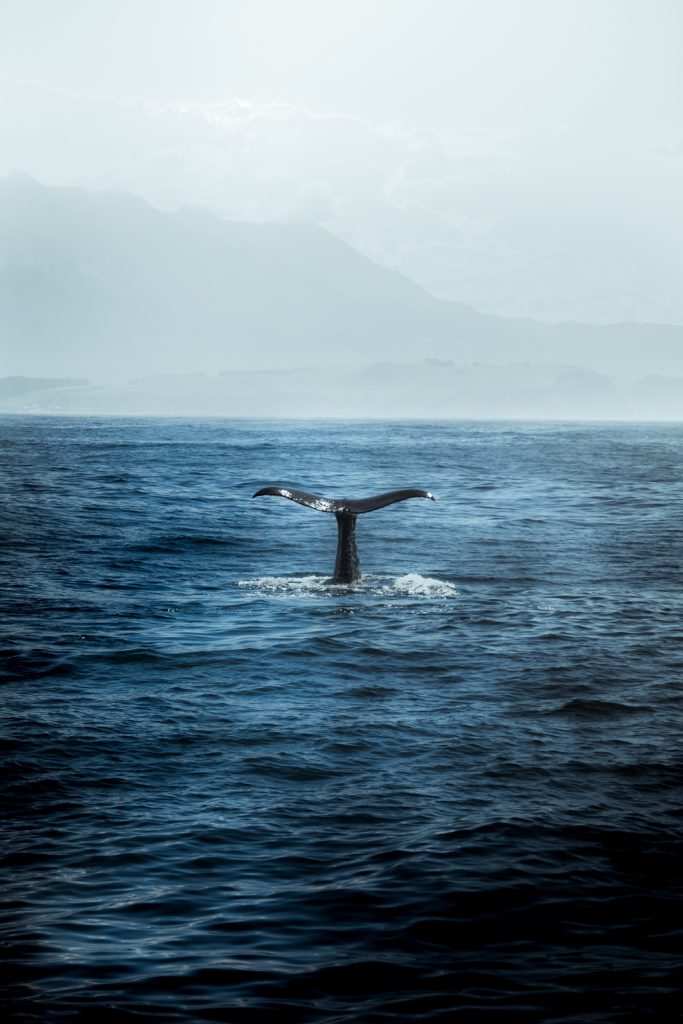
Photo by Iswanto Arif on Unsplash
When it comes to New Zealand July tours, there’s one option you have to explore: a whale watching tour in Kaikōura .
Whale watching is a pretty awe-inspiring experience any time of year, but July falls right in the middle of migration season making it the optimum time to be out spotting the sea’s greatest creatures.
The sperm whales who live off the shore of Kaikoura give you a 95% chance of spotting a majestic mammal slicing through the sea whenever you go out. But between June and October, humpback, pilot and even blue whales pass through these waters.
It is hard to describe the experience of seeing something so vast, so magnificent, as a blue whale cutting across the ocean: impressive, inspiring, even humbling doesn’t really come close.
Hit Treble Cone for Skiing or Snowboarding
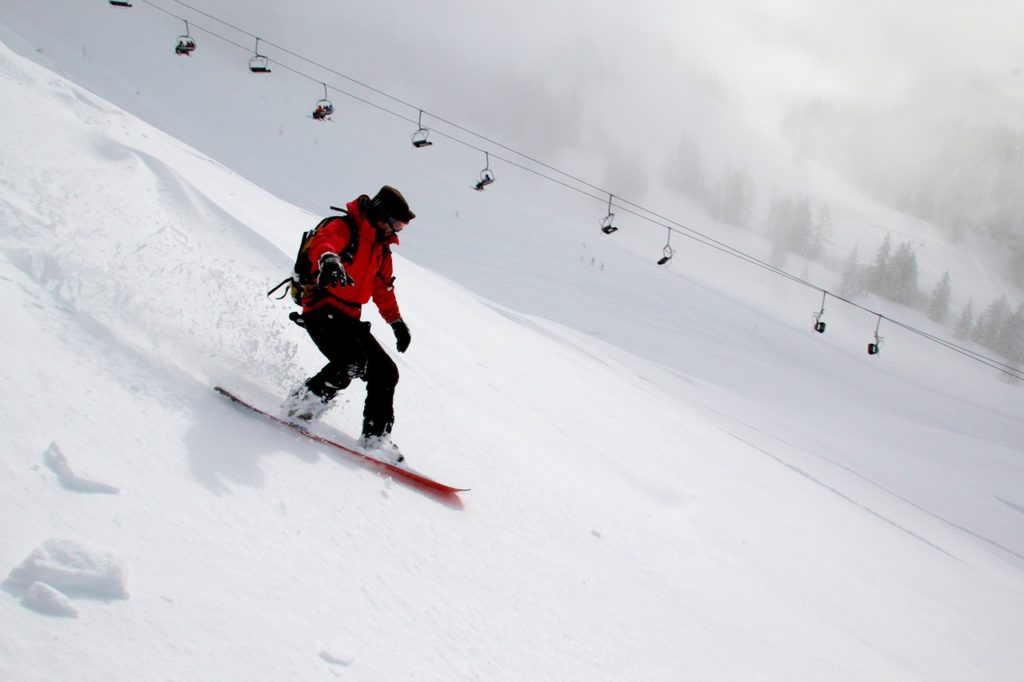
If you are looking to hit the slopes, then we suggest Treble Cone should be top of your list.
Located just outside Wanaka, the Treble Cone resort is the South Island’s largest ski resort and boasts the country’s longest vertical rise. They have a range of runs suited to any skill level and plenty of tuition available to hone your abilities. They even offer a ‘Sofa Ski Camp’ five-day intensive coaching programme to rapidly improve your skills. The resort has excellent mountainside facilities, with various food and drink options plus rental places and retail outlets.
But perhaps the biggest draw of Treble Cone is its truly astonishing views over the Southern Alps. The staggering scenery out across Lake Wanaka and Mount Aspiring alone are worth conquering the mountain for. It’s lucky then, that if descending at speed isn’t really your idea of fun, Treble Cone offers a gentler, scenic chairlift ride that shows you all the beauty at a slow enough pace to really enjoy it.
New Zealand International Film Festival
If the bracing temperatures and bite of snow don’t appeal to you, the New Zealand International Film Festival might be a more attractive prospect.
Started in 2009, the NZIFF sees 150-170 films screened across various venues in Auckland and Wellington. They also show a selection of films at smaller cities across both islands. But be warned: not everything is shown everywhere. Major film buffs should definitely stick to those two central locations.
Don’t expect Hollywood blockbusters or style over substance at NZIFF. The films selected for screening range from thought-provoking documentaries to inspiring independent films. Every film has something to say, and an interesting way to say it.
Get Revved Up at CRC Speedshow

This celebration of all things car-related provides everything a motoring fanatic could want. There’s an arena packed with events including stunt driving, drifting demos and ‘wacky races’. A massive exhibition area displays cars of all ages, including hot rods, supercars, muscle cars, race cars and classic cars. Plus, a collection of vehicles dubbed the ‘wildest, weirdest and wackiest’ that New Zealand has ever seen.
For those who like to roll on two wheels rather than four, there’s also a custom motorcycle show. And if you’re after a souvenir that fits in a suitcase, there’s a ‘Retro-orama’ vintage market, complete with a range of vintage and retro wares, including collectables, memorabilia, reproductions and clothing all themed around motor vehicles.
What To Pack for New Zealand in July
By now you will have gathered that the New Zealand July climate is pretty chilly. So, when it comes to packing for New Zealand in July, aim for a suitcase piled high with snuggly jumpers, woolly scarves and thermal underwear.
If you plan to spend a lot of your time outside, make sure you also go hard on waterproofs. The places that don’t see much snow will make up for it in rainfall, and wet clothes will sap the fun out of any excursion. Pack brollies, wellies and raincoats, and keep as dry as you are warm.
If the thought of all these layers is making your suitcase groan, there are also some key things that you don’t need to take. Ski equipment is rented out by most of New Zealand’s many ski resorts, while hire cars usually come equipped with snow chains and wet weather supplies.
When it comes to the matter of what to wear in New Zealand in July, here are our suggestions:
- Fleece jackets, wool jumpers and plenty of layers – to fight off the icy blasts
- Gloves, scarves – a couple of each so that when one set gets soaked, a comfy dry back up is available
- Thermal underwear – just to be extra sure you don’t get cold
- Waterproof clothing/jackets – and that you don’t get wet!
- Swimwear – the New Zealand mountain ranges are full of hot springs, toasty enough to enjoy even in winter.
- Sunglasses – it may be winter, but in New Zealand, the sun can still come out in force. Save yourself from snow blindness with a robust pair of polarised sunglasses.
New Zealand is an ideal holiday destination at any time of year. From the vivid, autumnal New Zealand in March to July, the snowy crisp depths of winter, it is a beautiful country with plenty going on. And if you prefer your air brisk, your scenery snow-capped and your days fun-filled, then plan your visit in July to ensure you find your perfect paradise.
Privacy Preference Center
Privacy preferences.
New Zealand Travel Insider
New Zealand in July
Find out whether July is a good month to visit New Zealand, what you can do, where you can go, and what New Zealand’s weather is like in July.
July is mid-winter in New Zealand.
Because the school holidays fall in July, it is generally a busy month to visit New Zealand , especially if you are planning on visiting the ski fields .
If you are looking for a quieter month in winter to visit New Zealand in which you can still enjoy snow on the ski fields, you may want to look into postponing your trip until August .
Driving in New Zealand in winter can be hazardous, but if you take the necessary precautions and drive carefully and attentively, you should be fine.
Things to do in July in New Zealand
The main tourist activities in July are skiing , heliskiing , snowboarding , cross-country skiing , snowshoeing , ice skating , or any other activity that you can do when it snows.
You can also visit New Zealand in July just to go on scenic drives to see snow on the mountains.
Normal hiking on trails that go up mountains is not recommended during this time of the year unless you are outfitted with snowshoes, crampons, etc. to deal with icy and hazardous conditions.

Mountains with snow in winter on the South Island
In addition, because the weather is so unpredictable, such activities can soon become dangerous and/or life-threathening with avalanches not unlikely.
Note that activities in July are not the restricted to winter activities because not all tour operators shut down in winter.
Therefore, you can still go on boat cruises, fishing, sailing, jet boating, kayaking, rafting, skydiving, and bungy jumping.
It’s just that the temperature may not be always pleasant for such activities.
In addition, scenic flights above Queenstown or Mount Cook are particularly magical during this time of the year. And if you are flying on a domestic flight from Auckland, Wellington, or Christchurch to Queenstown, you might even get a scenic flight over snow-capped mountains thrown in for free – it has happened to me several times.
Places to visit in July in New Zealand
In July, you can go anywhere that has snow. Popular places in New Zealand that get snow include Whakapapa in the center of the North Island and Queenstown on the South Island .
However, those are not the only places with snow in New Zealand .
A region that is a favorite of mine is Central Otago. A scenic winter drive on State Highway 85 toward Hawkdun Range on a nice and sunny day alone is almost guaranteed to be a feast for the eyes and soul in winter.
Another place you could visit in July is the West Coast of New Zealand, although it might be difficult to get to it from, for example, Christchurch where you would have to drive through a mountain pass that may be snowed in.
However, because the least amount of rain is expected to fall on the West Coast in July, you would enjoy the region more so as a sightseeing destination than during any other month of the year.
New Zealand weather in July
The weather in July tends to be very variable with a mixture of everything: rain, snow, hail, and sun. I particularly like July because the sun lies low on the horizon so is very good for landscape photography.
Ski fields usually open in June or July, but it always takes a while for a good amount of snow to fall. Therefore, I would not say that July is the best time to visit New Zealand for snow , but it is better than perhaps June.
Temperatures in July tend to fluctuate between -6 and 19 degrees Celsius (21 – 66 degrees Fahrenheit) with the warmest daytime temperatures being on the North Island in places such as Gisborne on the East Coast and Whangarei in the north.
The average daytime temperature for New Zealand is about 8 – 12 degrees Celsius (46 – 54 degrees Fahrenheit) in July.
The coldest nighttime temperatures can be found on the South Island in places such as Christchurch and Queenstown.
A lot of rain can fall in July. So it won’t surprise you to hear that July is the wettest winter month in places such as Auckland, Wellington, and Gisborne on the North Island of New Zealand.
This also applies to Christchurch on the South Island although similar amounts of rain fall in July and August in Christchurch.
Going more toward the West Coast of the South Island, July tends to be the driest winter month .

Table Mountain in July on the South Island
Places such as Westport and Queenstown receive the least amount of rain in July compared to June and August with the most rain typically falling in June.
The amount of daylight hours continue to decrease from June through July, reaches its lowest point at the beginning of July, and then slowly increases thereafter.
At the beginning of July, the sun rises between 7:45 and 8:25 a.m., and sets between 5:00 and 5:15 p.m., so you’ll have approximately 9 hours of daylight.
At the end of July, the sun rises between 7:30 and 8:05 a.m. and sets between 5:25 and 5:40 p.m., so you’ll have approximately 9.5 hours of daylight.
In conclusion, July brings approximately 9 to 9.5 hours of daylight .
The times mentioned above are for Wellington and Queenstown and may vary depending your location in New Zealand.
Photos of winter in New Zealand in a video
This video is a collection of images that were taken in June and July. The photos should give you a good idea of what June and July in New Zealand are like in terms of the weather but also what you will be able to see.
This article falls under Travel Guide .
Note: This article was accurate when it was published. Please confirm all details directly with the companies in question before planning your trip.
Related Articles
Similar posts, car hire in christchurch new zealand.
Learn which car hire opportunities are available at Christchurch airport and read about my experience renting from a couple of well-known companies.
New Zealand in September
Find out whether September is a good month to visit New Zealand, what to do, where to go, and what New Zealand’s weather is like in September.
6 Things to consider when booking Queenstown accommodation
Learn what you should take into consideration and watch out for when booking accommodation in Queenstown on the South Island of New Zealand.
Traveling New Zealand alone
Get 10 tips on how you, as a female traveler, can prepare for solo travel in New Zealand, and get the inside scoop on how I myself travel New Zealand alone.

How Many Days To See The North Island Of New Zealand?
Learn how many days it could take to visit the North Island of New Zealand based on an itinerary that includes some interesting places and things to do.
Wanaka vs. Arrowtown
Having a hard time deciding whether to visit Wanaka or Arrowtown? Learn how these two South Island cities differ and which one is best for you.
North Island vs. South Island
Cities to Visit
Getting Around New Zealand
Best Auckland Hotels
New Zealand's Airports
Driving in New Zealand
Visiting New Zealand With Kids
One Week in New Zealand
North Island Road Trip
South Island Road Trip
Top Things to Do
Best Beaches
Skiing in New Zealand
Top National Parks
Museums & Art Galleries
Hot Springs
Wildlife Reserves
Must-Try Food in New Zealand
New Zealand's Wine Regions
Best Restaurants
Nightlife in New Zealand
Best Time to Visit
Weather & Climate
Top Places to Visit
The 15 Best Places to Visit in New Zealand
:max_bytes(150000):strip_icc():format(webp)/Profilepic_small-825a61251a60463999e3bdc1e5add2a5.jpg)
New Zealand is only 1,000 miles long, 280 miles across at its widest, and home to just under five million people, but this long, narrow country contains many things to see and do. Travelers can ski on snow-capped mountains and bask on subtropical beaches, learn about Maori culture and discover its British heritage, sip on some of the world’s finest wines and hike through the uninhabited wilderness. Whatever travel experiences you enjoy, you can probably find them in New Zealand .
The country comprises two main islands—imaginatively named the North and South Islands in English, and Te Ika a Maui and Te Wai Pounamu, respectively, in Maori. Although the South Island is larger, more than three-quarters of New Zealand’s population lives in the North. Ideally, visitors should spend time on both islands, although picking one isn’t a bad approach. Here are the 15 best places to visit in New Zealand.
On the central North Island, Rotorua is famous for its geothermal features and Maori culture. Travelers short on time can visit on a day trip from Auckland, but it’s a convenient stop when traveling through the North Island. Hell’s Gate, Wai-O-Tapu, or Orakei Korako (on the way to Taupo) are good options for bubbling mud pools, boiling geysers, colorful rock formations, and many resorts and holiday parks in the area have hot spring bathing facilities. You can also learn more about Maori culture at tourist villages like Mitai, Whakarewarewa, and Tamaki with their cultural shows of traditional music and dancing and a hangi meal cooked in an underground pit.
Time commitment: One full day in Rotorua is ideal.
Waitangi is one of the most significant places in New Zealand's modern history. In 1840, Maori chiefs signed a treaty with representatives of the British Crown, the Treaty of Waitangi, a founding document that gave the sovereignty of New Zealand to British rule. Visit for a crash course in the country's history in this beautiful coastal location. The Waitangi Treaty Grounds include an indoor museum, the Treaty House, an ornately carved marae (Maori meeting house), and a ceremonial waka (canoe) spread over a large area. There are beautiful views of the Bay of Islands.
Time commitment: The Waitangi Treaty grounds deserve at least half a day.
Hokianga Harbour
The Hokianga Harbour is an alternative to the Bay of Islands, often overlooked by travelers and perfect for camping or RV adventures. The area is sparsely populated and predominantly Maori. Dune boarding, hiking, horse trekking, and dolphin watching are popular activities in the Hokianga. Base yourself in one of the nearby villages of Omapere, Opononi, and Rawene. To expand your exploration, the Waipoua Forest, just south of the Hokianga, is home to two of the largest living native kauri trees.
Time commitment: Aim to spend two days to a week in the Hokianga area.
Coromandel Peninsula
The Coromandel Peninsula reaches 50 miles into the Hauraki Gulf, across the Firth of Thames from Auckland. It’s a microcosm of all that’s good in northern New Zealand—stunning beaches, hiking trails, and arty, laid-back towns. During low tide at Hot Water Beach, dig a few inches beneath the sand to create your own natural hot spring bath, spend the day at Cathedral Cove, one of New Zealand’s most beautiful beaches (which is saying something), and hike the Pinnacles Walk or Coromandel Coastal Walkway.
Time commitment: To explore the whole Coromandel Peninsula, you’d need at least a week, but it’s possible to make a quick overnight trip from Auckland or Tauranga.
Tongariro National Park
TripSavvy / Taylor McIntyre
On the high central plateau of central North Island, Tongariro National Park is a dual UNESCO World Heritage Site, listed both for its natural and cultural significance. Most sights and activities revolve around three volcanic peaks: Mounts Tongariro, Ruapehu, and Ngauruhoe. The Tongariro Alpine Crossing is a moderately challenging day hike that is spectacular. In winter, ski at the Whakapapa or Turoa ski fields.
Time commitment: You need a day to hike the famous Tongariro Alpine Crossing (where you can spot the gorgeous emerald lake). With other hikes, biking trails, and skiing options in the winter, it’d be possible to spend several days in and around the park.
Hawke's Bay
Hawke’s Bay is one of New Zealand’s premier wine-producing regions and the oldest—there are more than 200 vineyards. The area is popular for its sunny climate, Art Deco allure, and the world’s largest gannet colony. The city of Napier, in particular, is famous for its Art Deco architecture because, after a massive earthquake in 1931, much of the town was rebuilt in this style. Keen bird watchers should visit the gannet colony at the Cape Kidnappers Reserve.
Time commitment: Hawke’s Bay is quite a long drive from other North Island centers (or a short flight to Hawke’s Bay Airport), so spend at least a couple of days here to make it worth the trip.
At the bottom of the North Island, Wellington is New Zealand’s capital. Equal parts bureaucratic formality and bohemian arts hub, Wellington is a perfect small city to explore. The New Zealand Parliament building, known as the ‘Beehive’ (you’ll understand why when you see it), and the Museum of New Zealand Te Papa Tongarewa (known simply as Te Papa) shouldn’t be missed. The Weta Workshop is a film special effects company founded by Peter Jackson, director of "The Lord of the Rings" and "The Hobbit," so fans of the film should consider a tour.
Time commitment: Budget at least two days for the central city and another few to visit outlying areas like the Kapiti Coast or Cape Palliser.
Abel Tasman National Park
TripSavvy / Alisha McDarris
Many travelers take the Interislander Ferry from Wellington to Picton, at the top of the South Island, and drive west to the Abel Tasman National Park, New Zealand’s smallest national park. Abel Tasman is all about the golden beaches, turquoise seas, and forested hiking trails. For longer hikes, enter the park from the tiny town of Marahau. You can also enter the park by kayaking from Kaiteriteri.
Time commitment: If staying in nearby Nelson or Motueka, it’s easy to visit the park on a day trip. To complete the popular Coast Track walk, you’ll need three to five days.
TripSavvy / Lauren Breedlove
On the eastern coast of the upper South Island, Kaikoura is famous for its whale and dolphin watching. It’s a marine-life hotspot because of the unique currents and deep trench just offshore. Whale-watching cruises operate all year, and while sperm whale sightings are never guaranteed, there’s a very high chance you’ll see them and dolphins, seals, and albatross.
Time commitment: Many travelers pass through Kaikoura while traveling between Picton and Christchurch. You only need a day for a whale-watching cruise, but extra days in Kaikoura can be spent hiking or enjoying the beaches.
Akaroa and the Banks Peninsula
Jutting southeast from Christchurch, the Banks Peninsula is a volcanic landmass comprising several volcanos. There are many harbors and bays, wildlife-spotting opportunities, and the French settlement of Akaroa, the oldest town in the Canterbury province. There are many 19th-century buildings there and cute French cafes. The Hector’s dolphin—the world’s smallest and rarest—live in the waters off the Banks Peninsula. (Sea kayaking is an excellent way to see them.) There are also many biking and hiking trails on the peninsula.
Time commitment: Akaroa and the Banks Peninsula are an easy day trip from Christchurch, but staying a couple of days will allow you to drive to more remote spots.
Aoraki Mackenzie International Dark Sky Reserve
The Aoraki Mackenzie International Dark Sky Reserve is one of the largest dark sky reserves in the world. In the central South Island, far from any major settlements, it’s almost entirely free of light pollution, making it an incredible destination for stargazing. Stargazing tours are informative, or you can find a quiet, dark spot on your own. You might also see the Aurora Australis (the Southern Lights, similar to the Northern Lights) if you're lucky. Mount Cook, New Zealand’s highest mountain (12,220 feet), is also in this area.
Time commitment: The tiny towns within the reserve—Lake Tekapo Village, Twizel, and Mount Cook Village—are a long way from anywhere, so these are not a quick getaway. Cloud-free skies are essential for stargazing, so you may need to spend a few days here.
Queenstown is not a typical Kiwi town—its real estate is among the most expensive in the country, and the style is more designer than farmer. But there’s no denying that Queenstown is blessed with beautiful geography as it's set on Lake Wakatipu with views of the Remarkables mountain range. Take the cable car to the top of the hill behind the city for spectacular views. Popular activities in the area include mountain biking, bungee jumping, speedboat rides, whitewater rafting, kayaking, canyoning, skiing in winter, or hiking the many trails.
Time commitment: Queenstown city only needs a day to look around, but it’s an ideal base for exploring the Central Otago wineries, trying adventure sports, and making day trips to Glenorchy, Wanaka, Arrowtown, or Fiordland.
Dunedin and the Otago Peninsula
Dunedin is a university town on the South Island’s east coast. Dunedin is the Scots Gaelic name for Edinburgh, and the Scottish influence is strong. The neo-gothic architecture of the University of Otago, the Dunedin Railway Station, and some churches lend an Old World aesthetic to Dunedin. The world’s second steepest street (as of August 2019), Baldwin Street, is also a quirky sight. (The first is in Harlech, Wales.)
A short drive from Dunedin is the hilly, windswept Otago Peninsula, one of New Zealand’s finest eco-tourism and bird-watching destinations. Drive (or take a tour) out to see the penguin, albatross, and seal colonies of the Otago Peninsula, stopping at Larnach’s Castle en route.
Time commitment: Two or three days are needed here, divided between the city and the peninsula.
Fiordland National Park
In the southwest of the South Island, the Fiordland National Park is New Zealand’s largest, and it’s part of the Te Wahipounamu UNESCO-listed World Heritage Site. A vast area of forests, mountains, and glacial fiords, visitors can be as active or relaxed as they like here, on sightseeing cruises, scenic flights, or multi-day treks. The small town of Te Anau is a good base and has caves with glow worms.
Milford Sound is perhaps the most famous sight, with pointy Mitre Peak rising from the water, offering perfect reflections on a clear day. Lake Te Anau and Lake Manapouri are beautiful places to cruise or kayak.
Time commitment: Some travelers visit the Fiordland National Park on a quick day trip from Queenstown or Wanaka, while others stay for longer to explore. The famous Milford Track trek between Te Anau and Milford Sound takes four days.
Stewart Island /Rakiura
Off the southern coast of the South Island, Stewart Island/Rakiura is New Zealand’s third-largest island. Around 85 percent of the island is a national park reserved for penguins, kiwis, and seals. While the temperatures are generally quite cold this far south, the beaches are empty and worth the trip across the Foveaux Strait from Bluff.
Birdwatching and hiking are popular activities, especially within the park's boundaries. The Rakiura Track is a 20-mile (32-kilometer) hiking trail that circles the Rakiura National Park, and it takes two to four days to hike the entire length. The small capital, Oban, is a welcoming town that serves up seriously fresh seafood.
Time commitment: As it’s necessary to get a ferry to Stewart Island/Rakiura (or take a short flight from Invercargill to Oban), it’s worth spending a few days here. Camping is a good option.
The Top 20 Things to Do in New Zealand
Where to See Penguins in New Zealand
How to Spend One Week in New Zealand
The Top 10 Cities in New Zealand
The Top 15 Things to Do on New Zealand's South Island
New Zealand’s Top 6 National Parks
Top 15 Things to Do in New Zealand's North Island
The Complete Guide to New Zealand's Great Walks
Your Trip to New Zealand: The Complete Guide
Take a Road Trip on New Zealand's North Island
The 15 Best Small Towns in New Zealand
How to Go Backpacking in New Zealand
The 10 Most Beautiful Lakes in New Zealand
The 10 Most Important Historic Sites in New Zealand
Fiordland National Park: The Complete Guide
Traveling to New Zealand With Kids: Everything to Know
11 must-do experiences in the South Island
Experience New Zealand's highest peak and explore the only castle in the country. Admire striking lakeside views, street art and mountain peaks.
The South Island hosts some of the purest natural landscapes you’ll ever experience. Add some of these must-do's to your South Island itinerary.
1. Marvel at Mount Cook, New Zealand's highest mountain
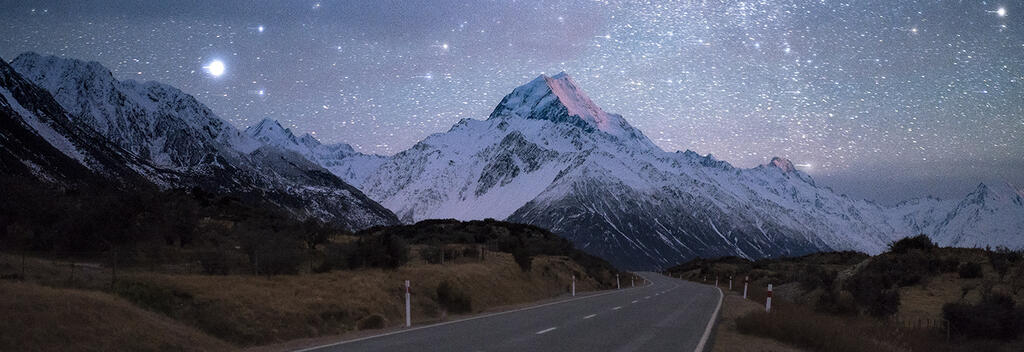
Aoraki / Mt Cook, Christchurch - Canterbury
By Will Patino
Experience the beauty of Aoraki/Mount Cook on foot. Enjoy a birds eye view of the area from the air on a scenic flight or go on a boat trip with Glacier Explorers on the only accessible glacial lake with icebergs in the world. Day or night, from up close to views across the water, this mountain takes on of our top spots for South Island experiences.
2. Visit New Zealand's only castle
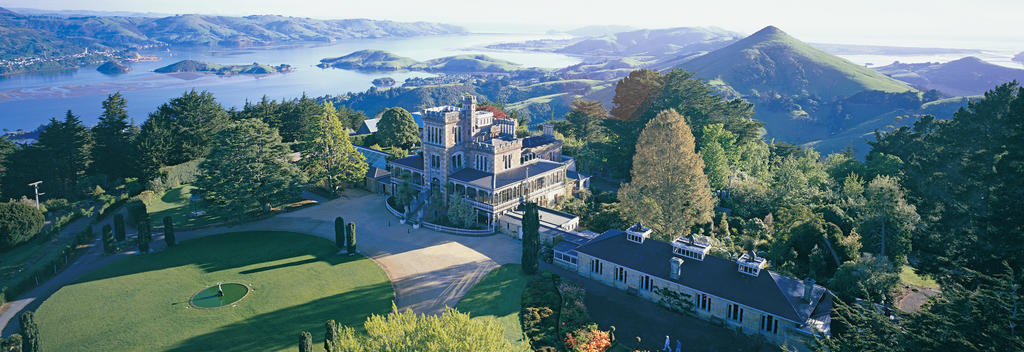
Lanarch Castle, Dunedin
By Enterprise Dunedin
Built by William Larnach in 1871, the Larnach castle is the only one of its kind in New Zealand. The castle and its creator offer a fascinating look into Dunedin's history. Boasting a 3,000 square foot ballroom, a tower with sweeping views of the Otago Peninsula and stunning Victorian style gardens, Larnach Castle is a must-do. Soak up the atmosphere and stay for high tea, hosted each day at 3pm.
3. Go native bird spotting on Rakiura/Stewart Island
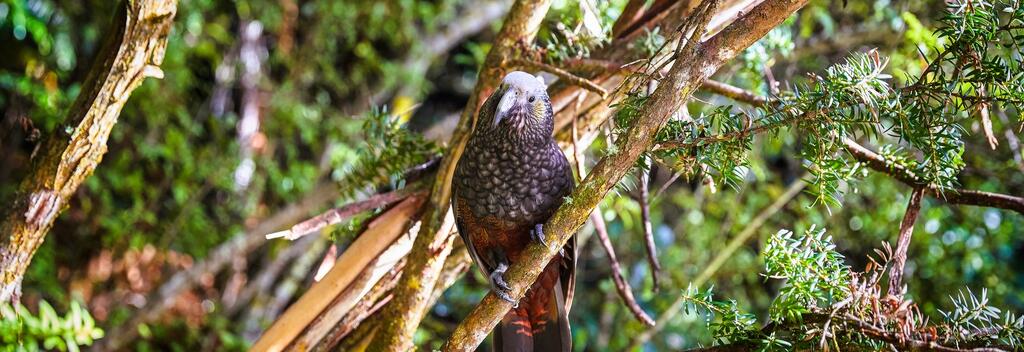
Stewart Island birdlife, Stewart Island - Rakiura
By Matt Crawford
Stewart Island is home to New Zealand's largest and most diverse bird population. Here, you can go birdwatching and see kākā, albatross, penguins, weka and even kiwis as you walk. With over 240 kilometres of walking tracks you can explore the beaches and rainforests at your own pace or pick from one of the many tour companies and discover the island's hidden gems.
4. Discover the majestic Milford and Doubtful Sounds
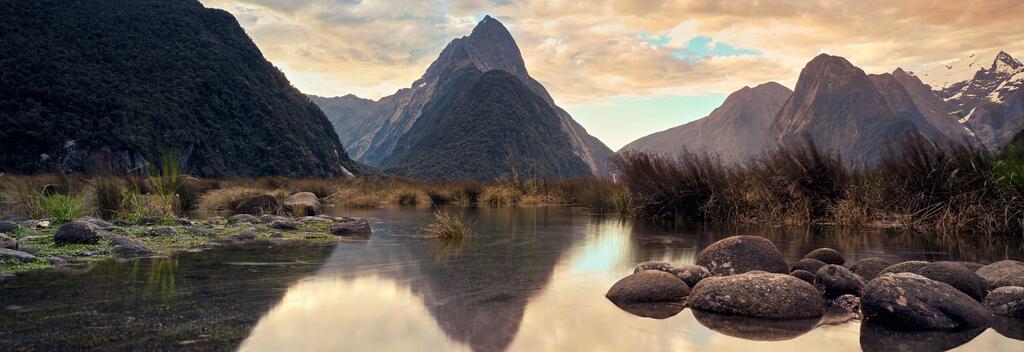
Milford Sound, Fiordland
By Tourism New Zealand
A UNESCO World Heritage site, Fiordland National Park features Milford and Doubtful Sounds which you can explore by boat , air or on foot . Keep the camera handy - there's a magic spot around every bend in this part of the world! The park can be accessed through the picturesque town of Te Anau .
5. Explore the Marlborough Sounds
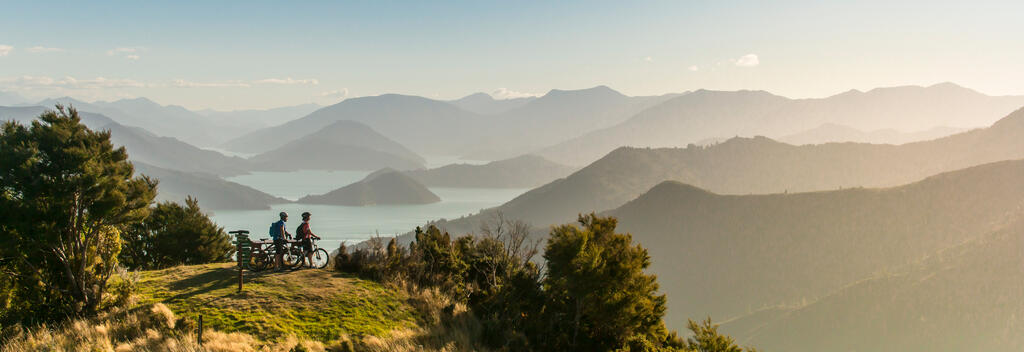
Marlborough Sounds by bike, Marlborough
By Marlborough Tourism
Located at the top of the South Island, Marlborough Sounds boasts 1,500km of New Zealand coastline. Home to secluded bays, historic sites, marine reserves and precious island sanctuaries which foster kiwi and other native species. Cruise or kayak your way through the Sounds, spotting the wildlife along the way. Starting at Ship Cove, walk or cycle bush clad ridgelines to admire the view from the Queen Charlotte Track.
6. Go on a street art trail in Christchurch
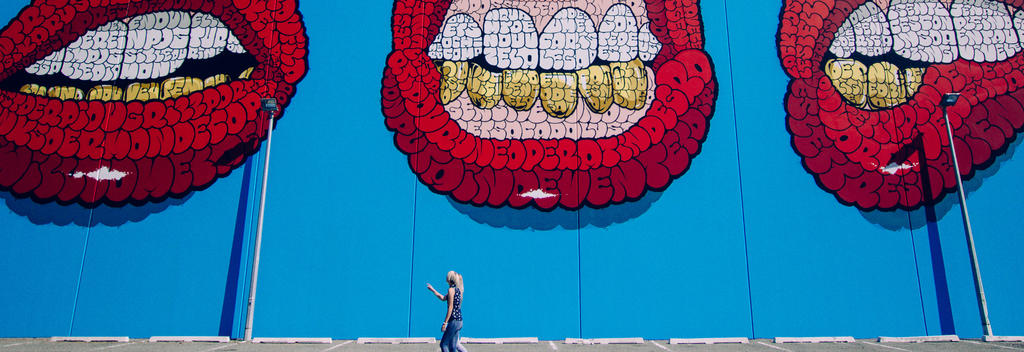
Christchurch Street Art Trail, Christchurch - Canterbury
By ChristchurchNZ
Soak up the creative vibe of Christchurch before you hit the road on an epic South Island journey. New Zealand's home of street art, you can walk the streets of Christchurch and admire ever-evolving murals in the city (opens in new window) . With stunning art like the Riverside Mural, Kaitaki in the YMCA Building and Organic Matters in Lichfield street, creativity meets you at every turn and corner.
7. Choose your own adventure in Queenstown
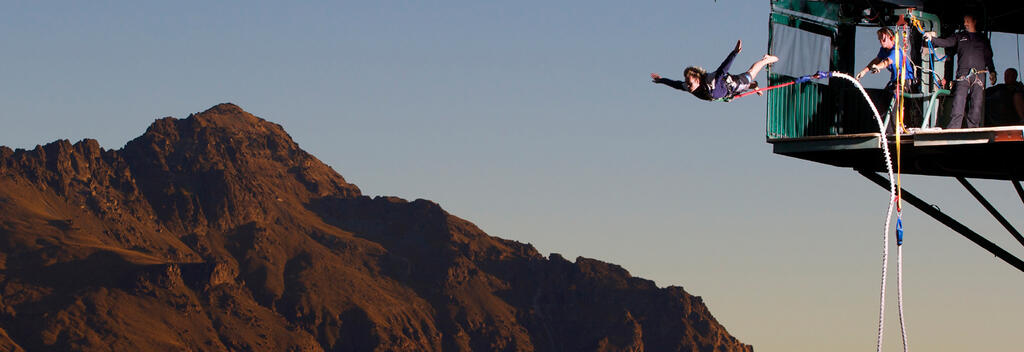
AJ Hackett Bungy, Queenstown, Queenstown
By AJ Hackett Bungy
The stunning lakeside resort of Queenstown is the adventure capital of the world. From iconic bungy jumping, jet boating , to quad biking, white water rafting , river surfing, sky diving and canyon swings ...there is something for everyone!
8. Enjoy the outdoors at Mt Aspiring National Park
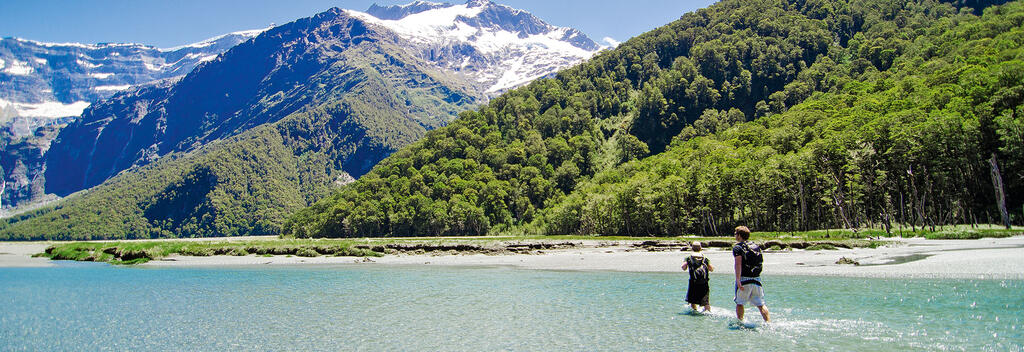
Mt Aspiring National Park, Wānaka
By Tourism NZ
From soaring mountains to tranquil river flats, glaciers and turquoise lakes, exploring the Mount Aspiring National Park wilderness is an unforgettable experience. Just an hour's drive from Wānaka , it boasts plenty of activities for outdoor enthusiasts; from walking to jet boating and scenic flights . Choosing where to start is the hardest part!
9. Taste the wines of Central Otago
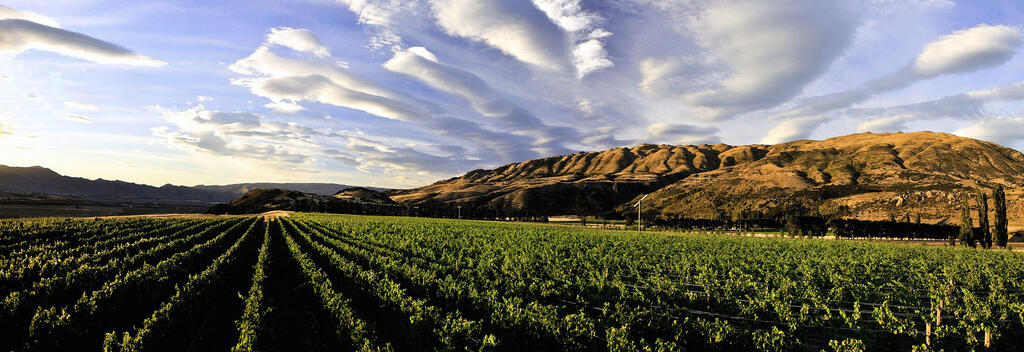
Wineries, Central Otago
By Archangel Wines
Central Otago is breathtaking, with vast undulating landscapes, rugged snow-capped mountains, clear blue rivers and tussock-clad hills. The gem of this region is the multitude of wineries , many world-renowned for their Pinot Noir. Meet the wine-makers, stroll or bike through the vines and savour the best of this region.
10. Discover the hidden paradise of Hokitika Gorge
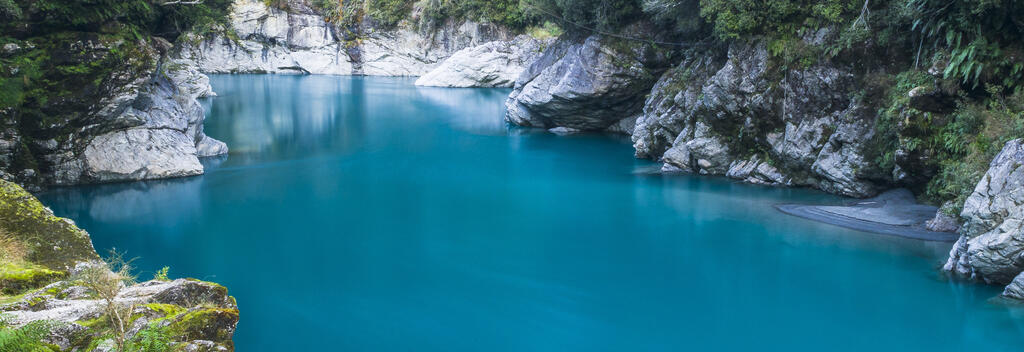
Hokitika Gorge, West Coast
By West Coast Tourism
Located 33 kilometres from Hokitika on the West Coast, The Hokitika Gorge is one of those places that look as good in photos as in real life. The vivid turquoise water surrounded by lush native bush looks too good to be true but trust us, it is well worth a visit. Take a tour to access some unique and hidden locations with Hokitika Gorge Tours.
11. Encounter marine life in Abel Tasman National Park
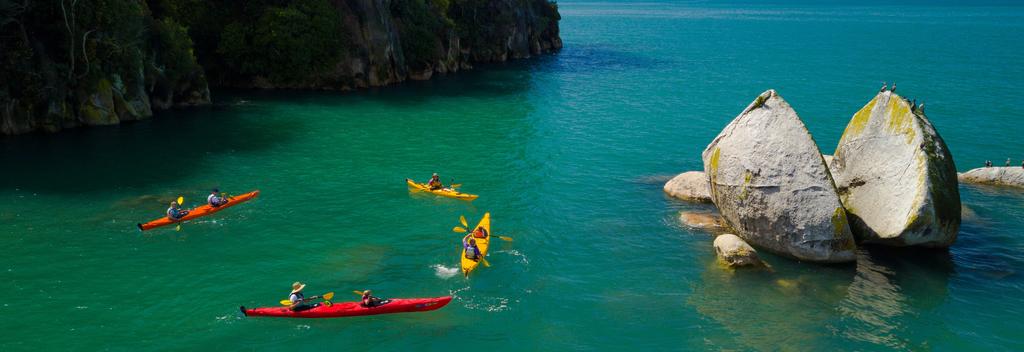
Split Apple Rock Kaiteriteri Kayak Nelson, New Zealand
By Nelson Tasman
The sheltered bays of Abel Tasman National Park are perfect for sailing or kayaking, with ample opportunity to see the seals and dolphins who regularly play in these coastal waters. If you prefer to explore by land, the park is a great place to walk. Hike the Abel Tasman Coastal Track and follow the coastline through native bush, past limestone cliffs and along golden beaches.
Discover your South Island adventure
Find more things to do in christchurch - canterbury, find more things to do in central otago, find more things to do in stewart island.
- Share on Facebook
- Share by email
See other journeys in the South Island
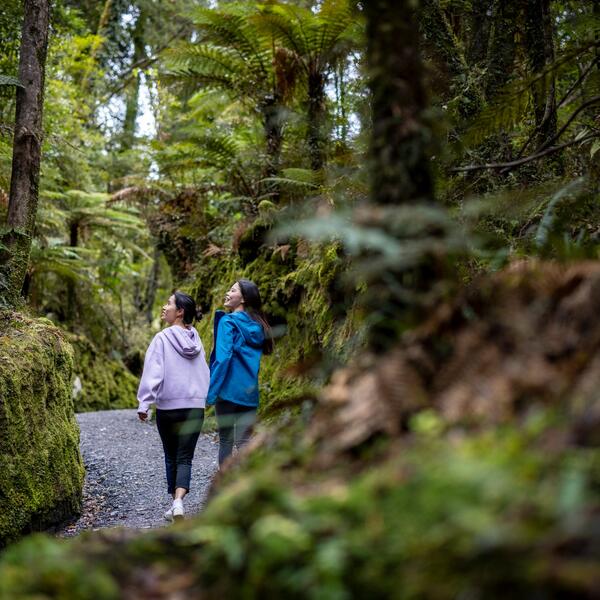
Top things to do in the West Coast long-arrow-right
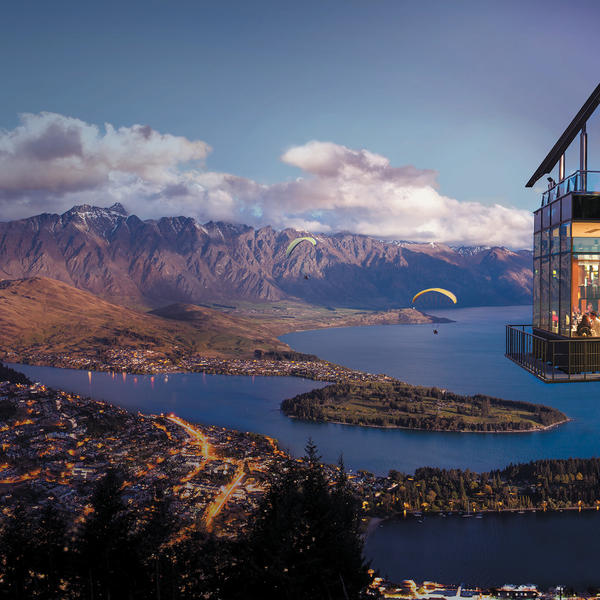
Top 10 things to do in Queenstown long-arrow-right
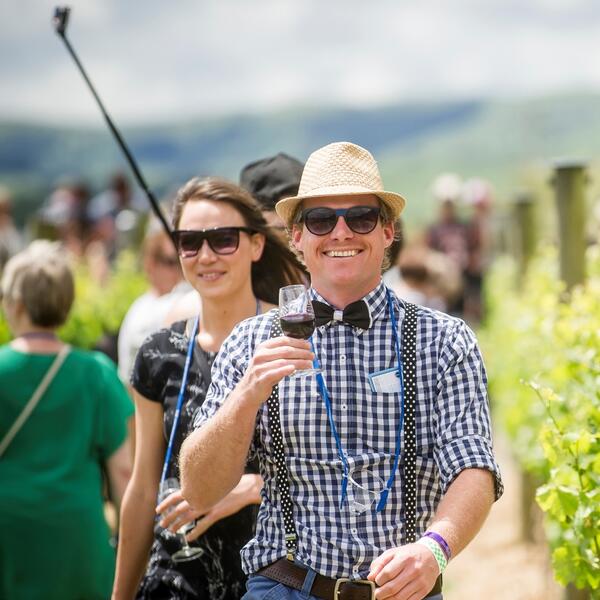
Top 10 food and wine events long-arrow-right

The ultimate guide to the seasons in New Zealand: A year-round adventure
Understand what to expect from the different seasons in New Zealand and plan your itinerary to make the most of them.
Through the seasons of Aotearoa New Zealand, each region gets its time to shine.
From the subtropical north to the Antarctic winds of the South, the weather patterns here are a big part of what makes our country such a special place.
The following seasonal New Zealand travel tips will help you to decide when you might like to travel to New Zealand and which spots you might prioritise.
Table of contents
The seasons in New Zealand
Each season in New Zealand offers something different. They each have their own advantages and disadvantages, resulting in great travel opportunities if you know where and when to visit.
December, January, and February – Expect warm and sunny weather throughout the country.
Mid-December through to late January can be very busy, especially near tourist hotspots and beach settlements.
This is peak season throughout the country .
Autumn (Fall)
March, April and May – Expect fairly settled weather, getting colder as the season progresses, and occasional rain.
This is shoulder season .
June, July and August – These are the coldest months in New Zealand.
Expect periods of rain (though when the weather is nice, you’ll get chilly blue-sky days) with occasional snow to ground level in the deep south.
This is off-season for most of the country, but peak season for Queenstown, Ohakune etc. – anywhere with skiing/snowboarding.
September, October and November – The weather starts to warm up in spring but can still be fairly unsettled with periods of fine weather followed by days of rain and high wind.
This is considered shoulder season , getting busier in November .
⚠️ The weather in New Zealand is often unpredictable, so we encourage you to check the forecast before planning any outdoor activities. It’s also important to pack well , even for day trips. If you plan for ‘four seasons in one day’ you’ll be well-prepared for all conditions.

Seasonal variation in Aotearoa
As you hit the northern-most part of New Zealand (nicknamed the ‘winterless north’), winter is less pronounced.
However, the further south you travel, the more difference you will notice between the seasons. This is most noticeable in the winter months when the South Island experiences the coldest weather in the country, including snow in some areas.
Plus, right throughout New Zealand you’ll generally notice the weather is normally warmest by the coast.
New Zealand across the seasons
- An introduction to the seasons in New Zealand
- When is the best time to visit New Zealand?
- What to expect in autumn
- What to expect in winter
- What to expect in spring
- Packing for the different seasons in NZ
When is the Best Time to Visit New Zealand?
If you’re planning a trip to Aotearoa, you’ll likely be wondering when the ‘best’ time to visit is …
The country has four distinct seasons which means there is always something awesome going on, no matter what time you visit.
Your personal preferences will influence when you would rather plan a trip – whether you prefer the sun-kissed touch of summer, the insta-worthy red and golden hues of autumn, the wonders of winter, or the blooming and blossoming parks and reserves of spring.
Each of our seasons has a unique charm and appeal to travellers.
Being in the southern hemisphere means that the seasons are opposite to those in the northern hemisphere.
So before you ask – yes, we have an island-life kiwi Christmas on the beach. This includes swimming, sunning yourself and BBQs for Christmas lunch! It’s a wonderful time to be here.
But whenever you choose to travel, we really do have it all.
Learn more about the ‘best’ time to visit New Zealand .

Summer in New Zealand: Dec, Jan & Feb
During the summer months, New Zealand comes alive with outdoor activities and adventures.
School holidays and warmer weather make this a busy time to travel – but it’s a popular season here for good reason.
Across New Zealand, there are lakes, rivers and streams galore, which are all the more special in summer.
As you travel State Highway 1 (the main road from the top of the north to the bottom of the south), you will cross over hundreds of bridges, big and little, that arch from riverbank to riverbank.
Many of these areas have rest stops where you can explore the area a bit more or take a dip (if it is safe to swim ).
Being such a mountainous country, there are also many, many waterfalls to enjoy.
Summer is a good time to check these out, as after a short walk, you might even be able to take a dip under one.
Mid to late summer is also the lavender season in Aotearoa, and who doesn’t love a romantic photo – or perhaps one of your family – amongst the soul-warming rows of violet blooms?
Fortunately, you’ll find many lavender farms across the country.
And we haven’t even mentioned the many glorious beaches in NZ!
Though you’ll notice more people travelling around, it can be hard to beat a beautiful summer’s day in New Zealand.

Average temperatures in the summer
North island.
20°C to 30°C (68°F to 86°F) during the day, dropping to 10°C to 15°C (50°F to 59°F) overnight.
South Island
Daytime averages of 15°C to 25°C (59°F to 77°F) and nighttime averages of 5°C to 10°C (41°F to 50°F).

Our favourite places to visit in the summer months
The bay of islands.
The Bay of Islands is not only a sacred and historically significant area, it is also a sight for sore eyes.
The Waitangi Treaty Grounds [save using the promo code NZTT] are spacious, lush and well-loved. With a grassy area that goes right down to the water’s edge, it is a fantastic viewpoint to watch wildlife and boaties alike.
This is also a fantastic place to visit if you’re looking for an authentic Māori experience and to learn about early Māori/English Crown history.
Outside of Waitangi, the Bay of Islands is a paradise for those who love the water. Dolphin spotting, fishing, paddle boarding and snorkelling are high on the priority list here.
In addition, you’ll find a number of wonderful walking trails there.
These are just a few of our favourites:
- Manginangina Kauri Walk
- Cape Brett Walkway
- Puketi Nature Trail
- Kerikeri River Track
- Tapeka Point Track

Tongariro National Park
If you love walking, hiking, tramping or trail running, National Park is the place to be in the summertime.
The famous Tongariro Alpine Crossing is a huge draw card here. It’s part of a Great Walk , and is a great choice for summertime walking as winter brings challenging conditions.
If you don’t want to commit to a significant walk, you’ll find a number of shorter trails in this world heritage area (like Gollum’s Pool and Taranaki Falls).
Plus, Tongariro National Park is the oldest national park in New Zealand, making it an extra special place to visit.

During the summer months, Hastings (in Hawke’s Bay ) comes to life with the Fiesta of Lights .
It first opened in 1998, after a pair of NZ brothers were inspired by a similar show in Canada.
Now it attracts countless visitors and locals each year, ready to enjoy a fantastic light display around Christmas time .

Abel Tasman National Park
The Abel Tasman National Park is a stunning destination to visit year-round, but particularly in the summertime.
It is known for having phenomenal beaches (with very swimmable water temperatures) and its world-class coastal walking trail (which is another of the Great Walks ).
Scenic cruises , [discounted] kayaking , walking, [discounted] heli flights and wildlife spotting are all great activities on offer in Abel Tasman. And if you’re looking for a more heart-thumping adventure, there is even a [discounted] skydiving option!
Or, if you’d prefer, spend the day lounging on the beautiful golden sands of Kaiteriteri Beach.

Mackenzie Country
Summer sees the Mackenzie Country lake area ( Tekapo to Twizel ) flush with thousands of multi-coloured lupin flowers.
Add to that the turquoise lakes and snow-covered mountains and you’ve got a memorable combination.
Did you know? Though they are beautiful, lupins are an introduced species in New Zealand, making them a pest. This means that they are sometimes sprayed, and as such, you never know exactly where you’ll see them.

Wānaka is another popular summertime destination in Aotearoa.
Climbing Roys Peak is a popular activity, but do so early in the morning before it gets too hot.
Some keen walkers even set off hours before first light, ensuring they’re at the top ready for the most amazing sunrise .
Kayaking and paddle boarding are another fun summer option in Wānaka. The lake’s edge is changeable and there are plenty of places to pull up for a rest. Or, if you’re up for more of a challenge, paddling to Ruby Island is a fun choice.
If you’re the camping type and are looking for a great spot to do so, don’t look any further than Glendhu Bay campsite. It has a fun family atmosphere, and with the lake at your fingertips and mountains all around, it’s a memorable spot. Just be sure to book in advance.
What’s more, Wānaka is also home to an impressive lavender farm, complete with a gift shop and petting zoo for the little ones.
It also has a great food truck park. We recommend you choose something tasty for dinner and pull up a seat beside the sweet little river.

Autumn in New Zealand: Mar, April & May
Autumn in New Zealand is a real treat. It’s all about dazzling colours and pleasant weather.
Towns and cities are also far less crowded as locals return to work and visitor numbers drop back, allowing more flexibility in travel plans.
What’s not to love about all of that?
Average temperatures
15°C to 25°C (59°F to 77°F) during the day, dropping to 5°C to 15°C (41°F to 59°F) at night.
Daytime averages of 10°C to 20°C (50°F to 68°F) and nighttime averages of 0°C to 10°C (32°F to 50°F).
Awesome autumn destinations
Hawke’s bay.
Self-acclaimed food and wine country, Hawkes Bay is also known as the fruit bowl of the North. It’s full of vineyards, orchards and citrus trees, so it’s no wonder the region shines with autumn colours.
Food and Wine tours and cycle trails are popular ways to make the most of the colourful eye candy, all while the year’s grape harvest is also in season.

Marlborough: Blenheim & Picton
Much the same as Hawkes Bay, the region of Marlborough offers wine tours and cycle trails – it’s even possible to cycle between the winery cellar doors.
Autumn is a lovely time to be there thanks to the changing of the leaves and more moderate temperatures (great for bike riding). It’s also the perfect time for a spot of fishing or sailing in the breathtaking Marlborough Sounds.
And that’s not to mention the amazing seafood it produces. There are many ocean-to-plate experiences here; one of which is the Havelock Mussel Festival (held in March).

Mackenzie Country, in the South Island, is a photographer’s dream during this season.
There you’ll find landscapes bathed in autumnal colours everywhere you look – all-shades-of-yellow, red and gold.

Charming Arrowtown is a classic that couldn’t be left off our list.
In fact, is there’s one NZ place to head during autumn, this is probably it!
Arrowtown is a little gem of nature and history.
The tiny cobblestone streets, heritage-listed cottages and gold-miners huts line the river edge. And in autumn, the leaves take on a life of their own with colours that seem to reflect the riches of its waters.

Central Otago
Hungry for more? Central Otago is the fruit bowl of the South.
Wine tours and fresh local produce are abundant in this area. Road-side stalls are everywhere, selling everything from berries, apples and stone-fruit (such as nectarines, peaches and cherries), to vegetables, locally produced honey, flowers and even saffron.
Autumn sees the Clyde Wine and Food Festival pop up on Easter Sunday, blocking the main street for the day. This popular festival attracts wine and food enthusiasts, keen to enjoy the gastronomic delights of the region.
Or, if you’d prefer to enjoy the area’s autumnal scenery, you’ll be spoilt for choice.
A number of great cycle and walking trails can be found there, including Gibbston Valley, Lake Dunstan Trail, Roxburgh Gorge Trail and the historical Otago Rail Trail from Clyde to Middlemarch.

Winter in New Zealand: June, July & Aug
Winter is a wonderland in New Zealand.
Some towns spring back into life, popular with skiers and snowboarders, while other areas enjoy the benefits of off-season with surprisingly settled weather.
Average wintertime temperatures
10°C to 15°C (50°F to 59°F) during the day, dropping to 0°C to 10°C (32°F to 50°F) at night.
Daytime averages of 5°C to 10°C (41°F to 50°F) and nighttime averages of -5°C to 5°C (23°F to 41°F).

Spots to visit in winter
Though Rotorua isn’t your typical ‘wintery’ escape – covered in snow and ice – it is an excellent place to warm your fingers, toes and soul.
Get cosy with the geothermal wonders of Rotorua . Pick from multiple hot pools and take a dip, thaw out and then grab a hot chocolate.
How wonderful does that sound?

South Island’s West Coast
The West Coast of the South Island is a real wintery treat!
This is the perfect to to get up close and personal with giant frozen bodies of water – glaciers.
Sadly, they are retreating rapidly, so if you can, take your chance to see these beauties now.
There are a few ways to do so:
- Walk the glacier track from the car park – you might get a peek of the glacier for free
- Embark on a [discounted] heli hike with a guide, walking in and over a glacier
- Take a [discounted] scenic helicopter flight over Fox and/or Franz Josef Glacier, with an optional snow landing.
- Stop by the Fox Glacier Lookout in your car (a little on from Lake Matheson).
Many are also surprised to learn that the West Coast enjoys fairly settled weather during this time of year, making it an extra-special time to visit.
But even if the weather isn’t playing ball, there’s plenty of fun to be had. The [discounted] quad biking , for one, is unmissable and goes ahead whatever the weather!

Queenstown and Wanaka
We’re not going to lie, winter is freezing in Queenstown and Wānaka (at least by New Zealand standards). But it’s well worth packing the thickest coat you own and getting on with it.
Snow on the surrounding mountains, a crisp chill in the air, string lights twinkling and a mulled wine in hand… it just doesn’t get better.
Skiing and snowboarding is the big drawcard here, with numerous ski fields to check out. Coronet Peak even offers a night skiing option.
Once you’ve had a full day up the mountain, you’ll find plenty to do in and around Queenstown and Wānaka. Both exude a bustling, fun atmosphere – even in the winter season.
Once a year, DFS Winter Fireworks puts on a vibrant display on the main wharf in Queenstown. It’s a spectacular evening, with the fireworks starting early, so even the kids can make it. Ah, the benefits of winter!
Taking a scenic helicopter ride is another outstanding option while in town. This is an incredible way to see the area and take in all the beauty of winter. Seeing things from a new perspective will add a little dazzle to your day.

Milford Sound
Milford Sound is stunning at any time of year, but we particularly love it in the wintertime. This national treasure is a sight to behold on a miserable, wet and dreary day – honestly!
When the rains won’t stop, it’s time to head to Milford . There are hundreds of temporary waterfalls that emerge with the rains, cascading down enormous cliff faces and over rock rock and native bush. It is absolutely spectacular and, for many, a real bucket list experience in Aotearoa.
What’s more, Milford Sound is the only fiord in New Zealand that is accessible by car, making it the most affordable of Fiordland’s most famous fiords .

The Catlins is a wild and untouched region of Southland, and the low light pollution there makes it a great place to catch a glimpse of the aurora australis and also do some star gazing/ astrophotography .
Both of these activities are best done in the wintertime.
Plus, with fewer travellers in this area, you’ll often feel like you have the coast to yourself!

Spring in New Zealand: Sept, Oct & Nov
Spring always feels like a relief, doesn’t it? The earth is no longer frigid and freezing, bees remerge buzzing, little birds, livestock and bulb flowers all emerge and everything has a fresh glow.
The Far North, Waikato, Taranaki and Marlborough are all perfect places to book a house and relish the warm air, light breezes and walk or bike along the many river or country trails.
Plus, here in NZ, we love a spring festival, so you’ll notice they’re our itinerary focus below.
Springtime temperatures
5°C to 20°C (59°F to 68°F) during the day, dropping to 5°C to 15°C (41°F to 59°F) at night.
Daytime averages of 10°C to 15°C (50°F to 59°F) and nighttime averages of 0°C to 10°C (32°F to 50°F).
The best spots to visit in the spring
Christchurch botanic gardens.
The beautifully curated Christchurch Botanic Gardens are definitely a must-see in the springtime.
With several little pockets to choose from to explore, we have a few recommendations to check out.
- playground and paddling pool – perfect if you have little ones or just want to dip your feet
- peace train – this miniature train takes you on an eight-minute loop around the gardens. It runs on the first and third Sunday of each month from September through to April and is even wheelchair accessible
- New Zealand garden – established in the early 1900s, it features an array of New Zealand plant species
- Art in the Garden – see if you can find the art dotted about the entire of Christchurch’s Botanic Gardens.

New Plymouth: Centuria Taranaki Garden Festival
The Taranaki Garden Festival is a week-long event in New Plymouth .
There, you’ll see a number of impressive sustainable gardens and public gardens, and you can join a relaxed garden party.
Head along to this festival late October/early November for a joyful experience.
The Alexandra Blossom Festival
The Alexandra Blossom Festival is held at the end of September each year to celebrate the blossoms lining the main street of this Central Otago town.
The weekend-long event includes a Mardi Gras on the Friday night (with live music and food stalls), a grand procession on the Saturday (complete with floats made from paper blossoms, which have been lovingly and painstakingly created every year by local businesses and school children), and a party in the park (with markets, food and beverage stalls, rides and live music).
It’s a wonderful event that brings the community together and people from all over.
Dunedin: Port Chalmers Seafood Festival
This seafood festival shows off the local catch and cuisine at the tiny Otago coastal town, of Port Chalmers – not far from the city of Dunedin in the South Island
Make sure to arrive hungry as there are food stalls and excellent local craft beer trailers. There’s also a music lineup and even kid’s entertainment.
For seafood-lovers this is sure to be a memorable day out.
Pro tip: Catch the train out to the festival to save the hassle of packing. Plus, it’s an awesome way to see the coast and arrive in style.
Four Seasons in One Day
The weather in New Zealand is incredibly changeable.
As we say here, you’ll experience four seasons in one day .
This is because Aotearoa lacks the landmass of larger continental countries. When weather fronts arrive, they are not always here to stay.
When travelling around the country, we recommend you’re well equipped for a variety of conditions, regardless of the season.
This means that in the summertime, you’ll still want a jumper/rain jacket close to hand and in the wintertime, it’s sensible to dress in layers so you can easily adjust to remain comfortable.
Seasonal Packing Lists For Your Trip to New Zealand
Aside from the standard gear that you’d take anywhere (your passport, undies, toiletries etc.), we recommend the following items for each season you spend in NZ…
Packing for Summer in New Zealand
- Sunscreen – the sun in New Zealand is likely to be harsher than you’re used to
- Insect repellent
- Swimming togs (that’s what we call a bathing suit)
- A cap/sunhat
- Comfortable walking shoes
- Jandals (flip flops)
Optional extras:
- A rash top (for extra sun protection in the water)
- Water shoes
Packing for Winter in NZ
- Merino layers
- Jeans and/or track pants
- A warm, waterproof jacket or vest
Packing for Autumn/Spring in Aotearoa
During the shoulder seasons, you’ll want a mixture of clothing from both the summer and winter packing lists.
The key to travelling during these seasons is to pack in layers – that way it’s easy to increase/decrease your temperate as required. As the weather is so changeable in New Zealand, it’s a real advantage to change quickly like this.
New Zealand is a year-round destination just waiting to welcome you.
Tailor your visit based on your own personal preferences and interests, support local businesses and embrace the magic of New Zealand’s seasons!
Now, isn’t it time you got planning?
Planning your first visit to New Zealand? 🇳🇿 Start here or check out these must-read articles:
Guest post by Theresa from Little Pocket .
Similar Posts

6 superb spots for a honeymoon in New Zealand!

The Ultimate Guide to New Zealand Supermarkets & Grocery Stores

The Most Memorable Classic Kiwi Ads – A Blast From Your TV-Watching Past

21 ways to save money on your New Zealand vacation

AirNZ unveil incredible new cabin designs – Including the Skynest for economy passengers

13 of New Zealand’s most incredible views
New Zealand in July: A Guide to New Zealand in the Winter
By the time July rolls around, there is no doubt as to which season we’re in and the winter has well and truly come into full force in New Zealand. Across the country, overnight blanketings of snow become more common and if the ski fields around the country haven’t been opened yet, they definitely will be by now.
The North Island is characterized by cool and crisp daytime temperatures and brisk nights, interrupted by fairly regular intermittent showers of rain. The South Island becomes decidedly colder and nights become particularly wintry. July is officially on record the coldest month in the year, and the generally the further south in the country you head towards, the colder it will get.

Weather in New Zealand in July
Weather in July across New Zealand is decidedly wintry but even so, there are variations in the weather across different parts of the country.
- Towards the northern reaches of the North Island, around Northland, locally known as the ‘Winterless North’, the subtropical and temperate climate of the region results in temperatures occasionally exceeding 15 °C area feature, even in the middle of winter.
- Surrounding regions, like Auckland also face similar weather situations and daytime high temperatures are not too much different. However, while the temperature may not be too low, the chances of rainfall definitely are not.
- Rain and humidity in the North Island are noted factors and regular rainfall in the region is to be expected, so be sure to pack warm and waterproof rain gear if you are planning on visiting this part of the country in July.

- The further southbound you travel in New Zealand, towards the South Island, temperatures and climatic conditions change noticeable as while daytime temperatures may remain relatively similar to other regions of the North Island, the nights become much colder.
- A result of the polar blasts that feature from the South Pole, and the presence of the Southern Alps mountain ranges, packing for a July vacation to the South Pole definitely requires some winter clothes.

- Coastal cities like Christchurch on the South Island tend to be marginally warmer than inland regions and temperatures vary from daytime highs of 12 °C to sub-freezing temperatures.
- Frosting is common and in cities like Queenstown, while the highs may read around 10 °C, the billowing winds and gusts of snow will make the perceived temperature to be far lower.
- Towards the upper reaches of the South Island, in regions around Nelson, regularly noted to be the Kiwi city that receives the most amount of sunlight, regularly exceeds daily high temperature readings of 12 °C and is also known to be one of the drier regions of the country during this time.
Where to Go in New Zealand in July
New Zealand in July is a skier’s paradise. Escaping the torrid heat of most countries to come to the cooler enclaves of the Kiwi backcountry is definitely something to be cherished.
- The ski fields of the North Island tend to be located on dormant volcanoes, offering travellers pristine skiing conditions, along with fantastic photography opportunities.
- The ski fields of the central North Island region are prime ski grounds. It should be noted that July is the wettest time of year in the North Island so high precipitation in the areas around Auckland and Wellington will make it difficult to enjoy any outdoor activities.
- However, both these cities have wonderful museums and galleries like the Te Papa Museum of New Zealand will make perfect escapes from the rain.

- Most of the North Island and regions in the South Island like Dunedin and Invercargill also get clouded by considerable rainfall so if dark and gloomy skies with overcast weather for most of the day doesn’t sound like your cup of tea, it would be wise to steer clear of these destinations.
- However, other regions in the South Island like Wanaka, Queenstown, Nelson, and Golden Bay become prime wintertime travel destinations.

- The ski fields around Wanaka and Queenstown are world-famous and Mount Hutt in particular are famous amongst locals for having some of the freshest and most fluffy powder snow.
- The topmost section of the South Island is noted for having quite mild winters and still receive plenty of sunshine during July, making regions like Nelson, Golden Bay, and the Marlborough Sounds ideal travel destinations.
- The sunny disposition will also be perfect for sightseeing around the Marlborough Sounds and Golden Bay too! Dolphin and whale-watching tours setting off from the Bay of Islands or near Kaikoura will still be operating, unless the weather is atrociously bad.
- Sightseeing tours of the Milford and Doubtful Sounds are both popular activities during July.

Events in New Zealand in July
July is a notable season and there are plenty of winter-themed and other festivals that take place in New Zealand.
- New Zealand has a special affinity with chocolate and the annual Cadbury Chocolate Carnival is held in Dunedin shows that special relationship. The Cadbury Jaffa Race features over 25,000 Jaffas (balls of orange candy coated in chocolate) being let loose down Baldwin Street in Dunedin, known to be the steepest street in Dunedin.
- The month of July is notable for being host to some of the most unique festivals in New Zealand. The North Island city of Russell in the Bay of Islands is the Birdman festival. This quirky festival is famous for the participants dressing up as birds and leaping off the Russell Wharf.

- July is also the month of the New Zealand International Film Festival and the festival begins in Auckland and moves from city to city across the country after it begins, so you may even be able to see it at whichever city you might be in.
What to Pack for New Zealand in July
While the Kiwi winter swings into full force in July, it is essential to pack warm, waterproof, and protective clothing as an important part of your luggage. There will hardly be any need for summery tees or shirts, besides as loungewear.
- Woollen beanies, socks, and sweaters will be especially appreciated during the cold winter nights on the South Island especially. Waterproof gloves and boots will also be hugely beneficial if you plan on going out to trek and tramp along the walking trails.
- Winter clothing can also be bought in New Zealand at most stores and skiing equipment and clothing can even be rented so that you don’t have to lug heavy equipment and clothing all the way.
- Waterproof clothing can be especially important in Auckland in particular as the city experiences most of the year’s rainfall during this time, July is regularly known to be the wettest month in the whole year in New Zealand, so be sure to pack accordingly.
This post was published by Ken Chiramel
Share this post on social media Facebook Twitter
New Zealand Travel Packages
Compare quotes from upto 3 travel agents for free
New Zealand Tour Package from India
Adventurous New Zealand Package
Cultural capitals of new-zealand - christchurch, dunedin, te anau and more, fantastic new zealand holiday tour with hobbiton, relaxing auckland, queenstown with singapore tour, treasures of north island - new zealand tour package, related articles.

Travel Tips
Currency Exchange in New Zealand

Beaches & Islands
New Zealand in January - Starting the New Year in New Zealand
New Zealand in February: A Summer Down Under
New Zealand in March! Autumn in New Zealand
New Zealand in April: Experience the Best of Autumn!
New Zealand in May: A Guide to Travelling to New Zealand in May
New Zealand in December! Experience Christmas in the Summer
New Zealand in September: A Guide to New Zealand during the Spring
New Zealand in October: A Complete Guide
New Zealand in November: A Complete Guide
New Zealand in August: The Coldest Month of the Year
New Zealand in June: The Beginning of the Kiwi Winter
Safety in New Zealand - Is it safe to travel to New Zealand?
The 3 Different Languages In New Zealand that are Spoken
Nine Engrossing Facts about New Zealand to Pique Your Curiosity
Cycling in New Zealand
All You Need to Know About Currency Exchange in New Zealand
Travel Tips in New Zealand to Navigate Safely

10 Most Beautiful Train Rides in the World

Backpacking
Backpacking in New Zealand: Hiking, Glaciers, and National Parks

Art & Culture
Dances in New Zealand Which Embody Local Culture

Wildlife & Nature
Wildlife in New Zealand To Explore Endemic Species

Nightlife In New Zealand: Top Things to Experience
10 Mesmerising Islands of New Zealand You Must Explore
National Parks In New Zealand - The Hidden Gems You Must Explore

Airports in New Zealand - The Complete Guide

Things to Do in New Zealand: A Guide to New Zealand's Best Activities
Culture of New Zealand: A Dive into the Country's Rich Tradition
Aurora Australis in New Zealand: The Southern Lights!
Fly Fishing in New Zealand: The Everest of Trout Fishing!
Comments on this post
Browse package collections, top listed packages, browse hotel collections, for special purposes.
Best Ski Resorts in New Zealand
Top Places in New Zealand

Get the best offers on Travel Packages
Compare package quotes from top travel agents
Compare upto 3 quotes for free
- India (+91)
*Final prices will be shared by our partner agents based on your requirements.
Log in to your account
Welcome to holidify.
Forget Password?
Share this page
- New Zealand Tours
- New Zealand Travel Guide
- When to Visit New Zealand
New Zealand in July: Weather, Tips & Snow Sports
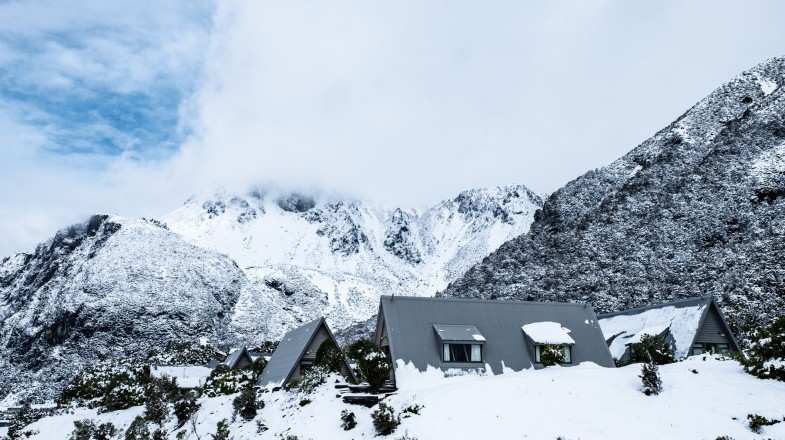
- ~ mins read
Thinking of visiting New Zealand in July? Unless you are going for the snow sports season in Queenstown or Wanaka, this is not the best time to travel to New Zealand. July is the coldest month of the year and the wettest in many popular cities like Auckland. So it is not a great time to enjoy the natural wonders and attractions that New Zealand is known for. But if you are looking for bargain deals in your travel, flights to New Zealand in July, as well as accommodation rates are low. This, however, does not apply to the ski resorts in the south, which are bustling during this time of year.
New Zealand Weather in July
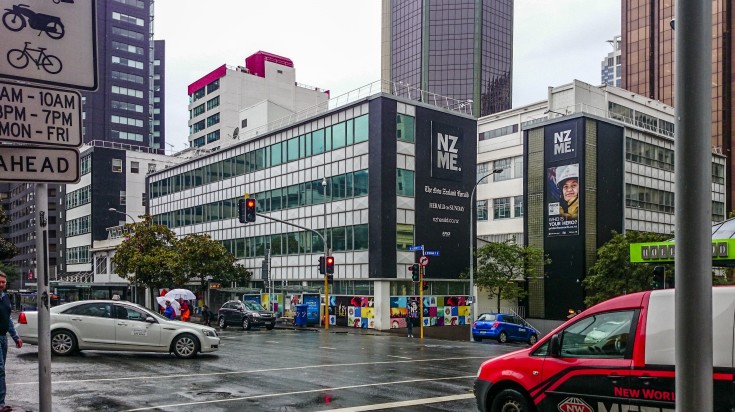
New Zealand's weather in July is notoriously wet and cold. With high temperatures of 14°C in the northern city of Auckland and an average of 18 days of rain, the weather is not ideal for outdoor exploration. But if you happen to be traveling in New Zealand in July, we advise you to check out the indoor attractions. Thinking of heading further inland on the North Island to the lakeside town of Taupo? Temperatures are a little colder here with highs of 10°C and a small amount of snowfall occurs during July.
If you are planning on heading south for the ski season, there is plenty of snow in the resort town of Queenstown, with 51mm of snowfall and the average temperature highs of 4°C across the month.
For a seasonal overview, take a look at our guide on the best time to visit New Zealand .
Weather in New Zealand in July - Rainfall and Temperatures
Why visit new zealand in july.
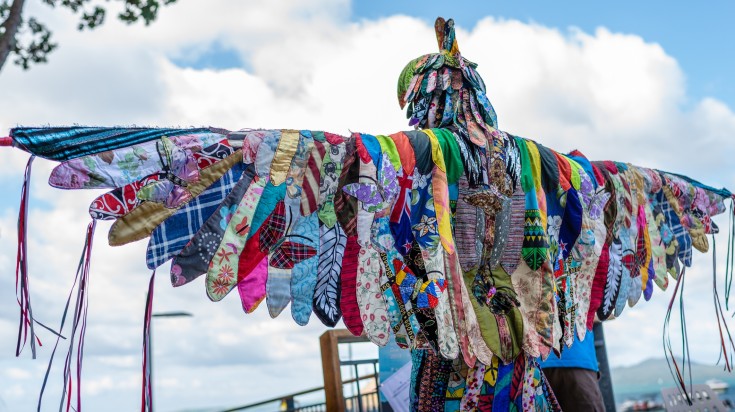
Despite adverse weather conditions, there are plenty of great reasons to visit New Zealand in July , from quirky events to preferable rates. Let us find out more:
- New Zealand International Film Festival : Looking to find the next Taika Waititi on your trip to New Zealand? Well, this illustrious film festival kicks off in Auckland at the start of July before traveling around several Kiwi towns and cities.
- Birdman: If you are looking for a completely insane event, head up to the Bay of Islands for Birdman. Watch in awe as grown adults dress up as birds and leap off Russell Wharf into the frigid water below, hoping to fly. It is madness but super entertaining to watch.
- Better rates: July being the low season in most of New Zealand, flight and accommodation rates get cheaper. If you are looking to travel around and do not mind the wet and cold weather, you can grab great bargains on your trip to New Zealand this month.
- Lesser crowd: Outside of the ski resorts, there are hardly any tourists in New Zealand in July. If you are planning on exploring the country's museums and galleries, you will likely have them all to yourself.
Where to go and what to do

One of the best things to do in New Zealand in July is to hit the slopes. At this time, the South Island resorts are hitting peak snow sports season. If you want a more chilled-out and less hectic resort than Queenstown, check out neighboring Wanaka . Known for its lake and striking trees, Wanaka also has a really cool cinema, eateries and ski resorts.
July is also an ideal time to take a coastal beach walk in the Abel Tasman National Park. Being near the coast, the national park has slightly warmer temperatures than inland cities, towns and resorts. After taking in the scenery, you can return to the town or your lodgings and warm up with a big mug of tea or mulled wine.
Another popular winter activity in New Zealand is taking a plunge into one of many hot springs. Known for its geothermal activity, the country has plenty of hot springs to choose from, including the ones near the lakes in the town of Taupo. Located on the North Island, Taupo has a lot of shops, bars and restaurants as well. And it is close to a lot of tourist attractions. Warm yourself up after a long day of chilly exploration with a soak in the hot springs with a trip to Taupo.
Yes, there are much better times to visit New Zealand other than cold wet July—that is, if you are not planning a skiing trip to the country. Outdoor excursions, such as hiking and camping, that make New Zealand such a popular destination are largely off the table this month. But if you are looking for a budget trip and do not mind the rain and cold, you will find tempting bargains on airfare and accommodation in New Zealand in July. Contact our local travel experts to plan a customized tour of New Zealand .
Other articles: New Zealand in June New Zealand in August How many days to spend in New Zealand Winter in New Zealand
Related Articles
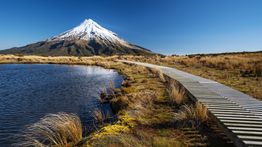
Best Time to Visit New Zealand
Pristine beaches, soaring mountain peaks, spr... read more
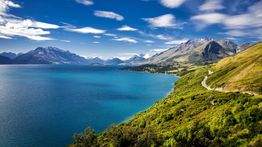
Summer in New Zealand: Destinations and Weather Tips
From the beaches on the Bay of Plenty to padd... read more
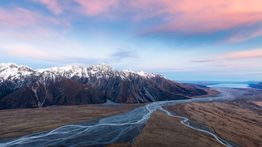
Winter in New Zealand: Top Destinations and Weather Advice
Characterized by snowfall all over the southe... read more
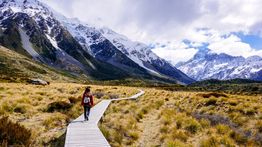
New Zealand in January: Great Weather for a Trek
Many visitors travel to New Zealand in Januar... read more
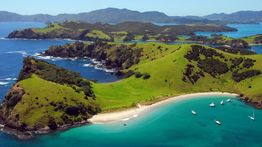
New Zealand in February: A Summer Island Hopping Trip
February is the last summer month in New Zeal... read more
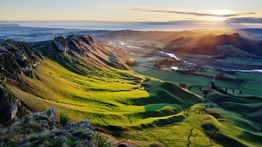
New Zealand in March: Great Weather For Exploration
Although it is already the start of autumn in... read more
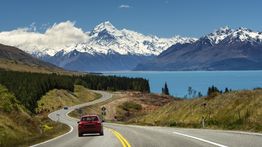
New Zealand in April: Great Weather and Fun Festivals
April is the middle of autumn season in New Z... read more
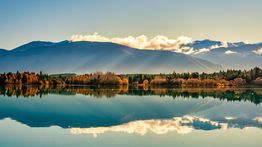
New Zealand in May: Weather and Travel Tips
Being the last month of autumn, the weather i... read more
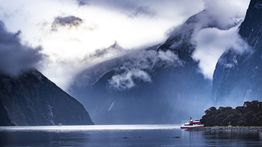
New Zealand in June: Weather, Tips & More
Looking forward to skiing in New Zealand? Wel... read more

New Zealand in August: Dry Weather and Outdoor Fun
August is probably the driest of the winter m... read more
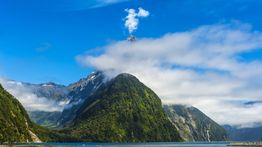
New Zealand in September: Weather, Tips & Adventure Sports
September is the start of spring in New Zeala... read more
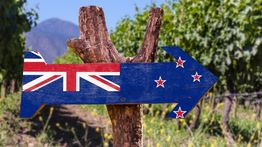
New Zealand in October: Weather, Tips & Water Sports
Visiting New Zealand in October is an amazing... read more
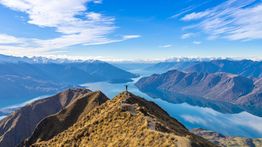
New Zealand in November: Great Weather for Outdoors
Spring will be in full swing during a trip to... read more
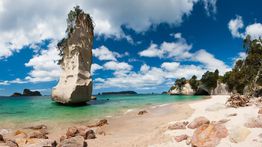
New Zealand in December: A Summer Holiday
As summer in New Zealand begins in December, ... read more
Related Categories
- How Long To Stay In New Zealand
- New Zealand Travel Advice
- What To Do In New Zealand
- When To Visit New Zealand
- Where To Go In New Zealand
- Previous Post

Popular Destinations
- Europe Tours
- Everest Base Camp Trek
- Italy Tours
- Spain Tours
- Argentina Tours
- Canada Tours
- Sri Lanka Tours
- Chile Tours
- Antarctica Tours


Things to do in Auckland in July
Navigate forward to interact with the calendar and select a date. Press the question mark key to get the keyboard shortcuts for changing dates.
Navigate backward to interact with the calendar and select a date. Press the question mark key to get the keyboard shortcuts for changing dates.
Looking for a different month?
July is a less popular time to visit Auckland . The weather is usually moderately chilly and breezy, with temperatures ranging from 51—58°F (11—14°C). There are plenty of events to check out and activities to try in Auckland during this time. Some of our top recommendations: explore the Auckland Art Gallery, go whale watching in the Hauraki Gulf, visit the Auckland Winter Garden, and more!
Auckland has plenty to offer for visitors of all ages and interests. In this article, we tell you the top things to see and do for your July trip to Auckland. Get inspired by the events, activities, attractions, and experiences unique to July. We’ll let you know where to explore events based on your interests, whether that’s food, culture, art, music, sport or others.
We’ll let you know everything you need to prepare for the weather in Auckland in July. Learn about what to wear and pack for your trip, the average temperatures throughout July, temperature changes from morning to evening and much more.
Table of contents
- Experiences
- Weather and what to wear
- Attractions

Best events and things to do in Auckland in July
Top experiences in july, explore the auckland art gallery, go whale watching in the hauraki gulf, visit the auckland winter garden, go on a food tour of auckland's winter markets, take a ferry to waiheke island for a winter wine tour, attend matariki festival events, take a scenic drive to piha beach, visit the auckland zoo for a winter safari night, go skiing or snowboarding at snowplanet, holidays in auckland in july.
There are no holidays in Auckland in July
Other notable holidays
- King's Birthday ( June 3 )
- Matariki ( June 28 )
- Fathers' Day ( September 1 )
- Labour Day ( October 28 )
- Guy Fawkes Night ( November 5 )
- Christmas Eve ( December 24 )
- Christmas Day ( December 25 )
- Boxing Day ( December 26 )
- New Year's Eve ( December 31 )
- Weather in Auckland in July
Temperatures on an average day in Auckland in July
The average temperature in Auckland in July for a typical day ranges from a high of 58°F (14°C) to a low of 51°F (11°C). Some would describe it as moderately chilly and breezy.
For comparison, the hottest month in Auckland , February, has days with highs of 74°F (24°C) and lows of 65°F (18°C). The coldest month, July has days with highs of 58°F (14°C) and lows of 51°F (11°C). This graph shows how an average day looks like in Auckland in July based on historical data.
Visiting Auckland? See our Auckland Trip Planner.
Historical temperature average in July
General weather summary, what to wear in july, best attractions for auckland in july.

Top searches in Auckland
Popular road trips from auckland, what's the weather like in auckland.
It depends on when you visit! We've compiled data from NASA on what the weather is like in Auckland for each month of the year: see the links below for more information.
- Weather in Auckland in January
- Weather in Auckland in February
- Weather in Auckland in March
- Weather in Auckland in April
- Weather in Auckland in May
- Weather in Auckland in June
- Weather in Auckland in August
- Weather in Auckland in September
- Weather in Auckland in October
- Weather in Auckland in November
- Weather in Auckland in December
All road trips from Auckland
- Auckland to Rotorua drive
- Auckland to Waitomo Caves drive
- Auckland to Wellington drive
- Auckland to Taupo drive
- Auckland to Hinuera drive
- Auckland to Tauranga drive
- Auckland to Paihia drive
- Auckland to Christchurch drive
- Auckland to Hamilton drive
- Auckland to Whangarei drive
- Auckland to New Plymouth drive
- Auckland to Napier drive
- Auckland to Hahei drive
- Auckland to Dunedin drive
- Auckland to Queenstown drive
- Auckland to Tongariro National Park drive
- Auckland to Fiordland National Park drive
- Auckland to Mount Maunganui drive
- Auckland to Nelson drive
- Auckland to Wanaka drive
- Auckland to Waihi drive
- Auckland to Blenheim drive
- Auckland to Whakatane drive
- Auckland to Milford Sound drive
- Auckland to Whanganui drive
- Auckland to Lake Tekapo drive
- Auckland to Matakohe drive
- Auckland to Taumarunui drive
- Auckland to Kaikoura drive
- Auckland to Hokitika drive
Explore nearby places
- Auckland Central
- Mount Wellington
- Hobsonville
- the North Shore
- Botany Downs
- Coatesville
- Whangaparaoa
All related maps of Auckland
- Map of Auckland
- Map of Remuera
- Map of Auckland Central
- Map of Ellerslie
- Map of Devonport
- Map of Bayswater
- Map of Avondale
- Map of Mount Wellington
- Map of Northcote
- Map of Takapuna
- Map of Otahuhu
- Map of Milford
- Map of Hobsonville
- Map of the North Shore
- Map of Botany Downs
- Map of Howick
- Map of Manukau
- Map of Albany
- Map of Browns Bay
- Map of Waiatarua
- Map of Torbay
- Map of Coatesville
- Map of Kumeu
- Map of Takanini
- Map of Huapai
- Map of Oneroa
- Map of Surfdale
- Map of Ostend
- Map of Papakura
- Map of Awhitu
- Map of Whangaparaoa
Auckland throughout the year
- Auckland in January
- Auckland in February
- Auckland in March
- Auckland in April
- Auckland in May
- Auckland in June
- Auckland in July
- Auckland in August
- Auckland in September
- Auckland in October
- Auckland in November
- Auckland in December
Looking for day-by-day itineraries in Auckland?
Get inspired for your trip to Auckland with our curated itineraries that are jam-packed with popular attractions everyday! Check them out here:
- 1-Day Auckland Itinerary
- 2-Day Auckland Itinerary
- 3-Day Auckland Itinerary
- 4-Day Auckland Itinerary
- 5-Day Auckland Itinerary

- Itinerary + map in one view
- Live collaboration
- Auto-import hotels and reservations
- Optimize your route
- Offline access on mobile
- See time and distance between all your places

The 25 BEST Places to Visit in New Zealand (2024 Edition)
- Last Updated: February 5, 2024
If you’re planning a trip to stunning Aotearoa, then our list of the best places to visit in New Zealand will help you with all your travel plans!
Telling anyone that you are planning a trip to New Zealand is likely to result in sheer envy or nostalgic memories from a trip they themselves took.
Quite rightly New Zealand is regarded as one of the most spectacular countries in the world.
Whether you want to hike through the Fiordland National Park, eat the freshest seafood in Kaikoura, try some adventure sports or throw yourself out of a plane, New Zealand has very much got you covered.
To truly enjoy everything New Zealand has to offer you are best off renting your own set of wheels and hitting the open road.
It really is a place where it’s not about the destination. It’s about the journey.
We’ll dive into some of the best places to visit on New Zealand’s South Island and North Island, as both have plenty of different things to offer.
READ MORE: Plan your trip to New Zealand with our New Zealand Travel Guide.
Table of Contents
Bay of Islands
Tutukaka coast , cape reinga, tongariro national park , mount maunganui, mount taranaki and the forgotten world highway , abel tasman national park, marlborough wine region, kaikoura , the west coast , milford sound and doubtful sound , catlins national park, otago peninsula , mount cook national park (aoraki) , arthurs pass national park, banks peninsula , christchurch , the best places to visit on the north island.
I’m going to start this article about the best places to visit in New Zealand by focusing on the North Island first!
Chances are this will be either your point of entry, exit, or both. The city’s numerous volcanoes have left their mark and its location as the point where the Tasman Sea and Pacific Oceans meet belies its status as New Zealand’s largest city.
Auckland is surprisingly full of beaches and hiking trails that are just waiting to be explored, not bad for a city of 1.5 million?
It’s also the perfect gateway to visiting Waiheke Island, a gem of the North Island. Waiheke Island has beautiful vineyards and olive groves as well as beaches and trails.
Whether you want to take on the rugged west coast surf beaches, relax and sip wine on Waiheke Island or head to one out to hike in the rainforests of the Waitakere Ranges, you can do it all in Auckland.
LEARN MORE about all the great things to do in Auckland .
Head north out of Auckland and you will eventually come across the Bay of Islands.
This gorgeous collection of islands on the eastern side of the North Island is home to secluded bays, coastal walks, and plenty of history, putting it firmly on our best of New Zealand list.
Head to Waitangi Treaty Grounds to get a deeper understanding of New Zealand’s history at the place where the Treaty of Waitangi was signed. This treaty formed New Zealand as a British Colony.
Head over to the lovely little town of Russell , once known as ‘the hell-hole of the pacific,’ it is decidedly less debaucherous these days.
If you are on a budget then stay in the small nondescript town of Paihia . It’s an excellent gateway to the Bay of Islands and far cheaper than other places in the area.
SPECIAL DEAL: Book a tour of the Bay of Islands here !
This rarely visited region south of the Bay of Islands is a hidden gem on New Zealand’s North Island.
The area is home to some truly spectacular coastal scenery, deserted beaches, and lovely walking trails.
Two particularly lovely spots are Whale Bay and Matapouri Bay .
The former is a secluded bay home to a lovely walking trail and 99% of the time, no one else.
If you’re wondering what to see in New Zealand, Matapouri Bay is a gorgeous beach that is the perfect place to stretch out with a book, but it’s definitely not a surf beach.
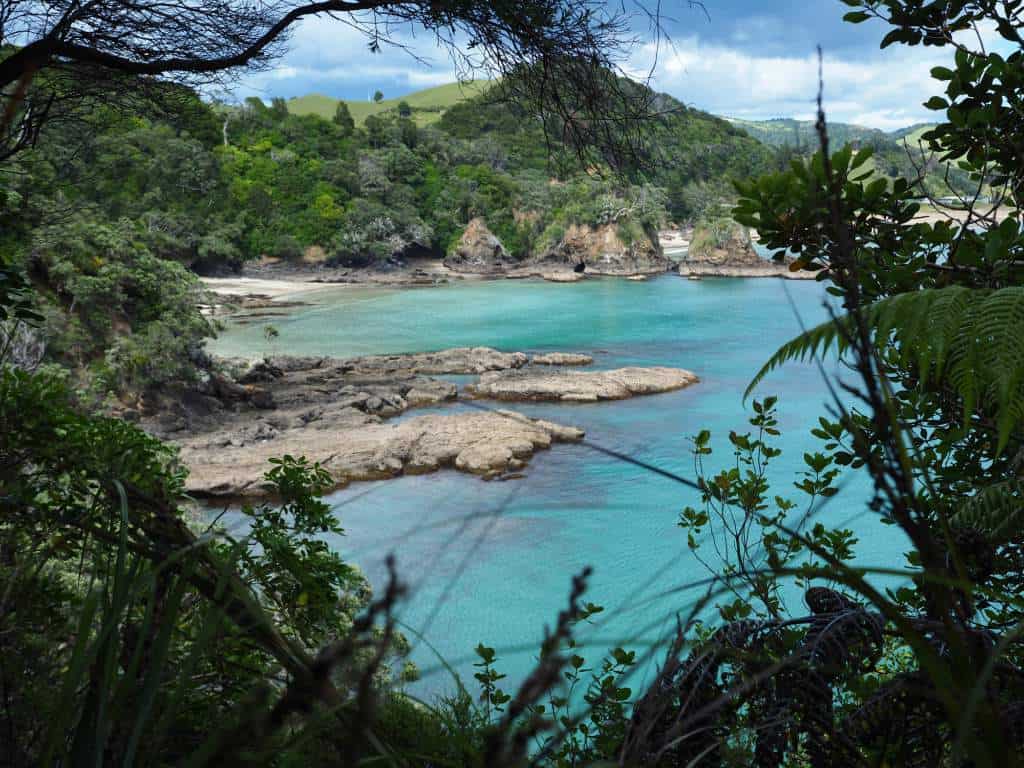
At the end of the ninety-mile beach lies New Zealand’s most northerly point; Cape Reinga. Brace yourself for some of the most spectacular coastal scenery in New Zealand.
Getting up to Cape Reigna truly is part of the experience. In this case, the journey is just as important as the destination itself.
One of the most notorious places to visit in New Zealand, thanks to the almost constant smell of sulphur, Rotarua is the heart of geothermal New Zealand.
With geysers blowing their tops, bubbling mud pools, and steaming hot springs, there is plenty to keep you busy.
Head out to the thermal reserve and check out Te Whakarewarewa to experience the town’s volcanic activity up close and personal.
The city’s outskirts are home to outdoor activities galore, with mountain biking, tramping (hiking) and various water sports all on the agenda.
READ MORE: Include these things to do in Rotorua in your itinerary.
If you are in any way claustrophobic then this is not the place for you.
Waitomo is home to some of the largest and most spectacular caves in New Zealand.
Best of all you can experience them firsthand with some incredible caving expeditions.
Try your hand a black water rafting, which involves an inner tube, lots of water and plenty of glow worms.
Waitomo’s true gem is the lost world cave. The 100-meter free abseil into the cave itself feels like a descent to the centre of the earth.
From here it’s a mixture of climbing, walking, wading, and swimming to return to the surface.
Book a rafting experience in the Waitomo Caves on Get Your Guide .
Welcome to one of the country’s most spectacular national parks. Any New Zealand destination trip should definitely include a visit to this UNESCO World Heritage Site.
The stunning expanse of land is home to the famous Tongariro Crossing , considered by some to be the best 1-day hike in the world.
However, there is more to the Tongariro National Park than the crossing.
The Ridge Walk from the hamlet of Whakapa offers spectacular views of both Mount Ngauruhoe and Mount Ruapehu.
Longer trails such as the Silica Rapids and Taranaki Falls trails also offer spectacular views of both mountains.
Grab the opportunity to take on these trails at sunrise to enjoy some epic views all to yourself.
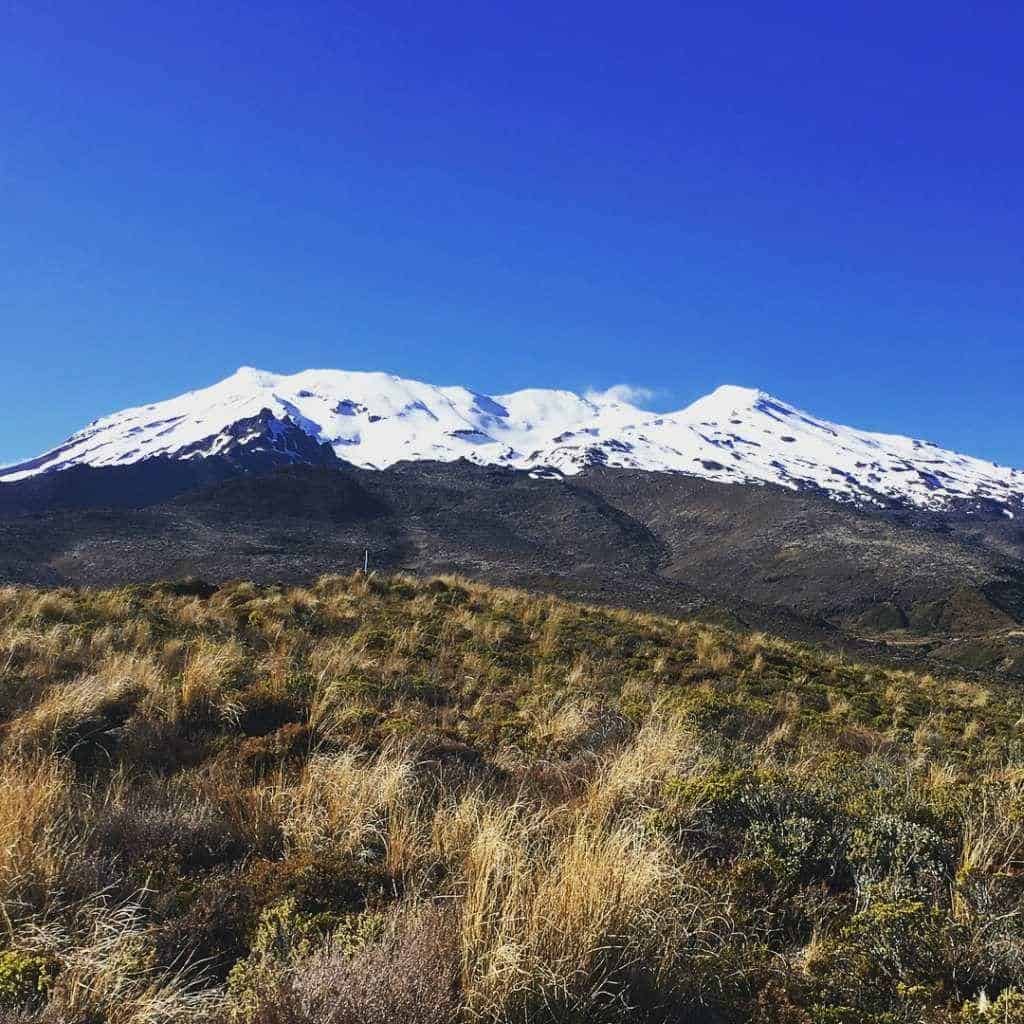
Lake Taupo in the heart of the North Island is the centre of extreme adventure sports for the region.
Here you can throw yourself off a bungee ledge or out of a plane to your heart’s content.
In fact, with more than 30,000 leaping from planes every year, Taupo is the skydiving capital of the world.
The lake itself is home to numerous water sport options ranging from relaxing cruises to hiring a speed boat yourself.
A short drive from Taupo is the breathtaking Hukka Falls which is certainly worthy of a visit.
Lake Taupo itself is littered with secluded bays where you can park up, take a dip and soak up the scenery, perfect for a lazy day.
There are also mountain biking and hiking trails aplenty if a lazy day is very much out of the question!
Put it on your list of places to see in New Zealand!
Welcome to New Zealand’s premier beach resort. This quaint little town that sits just to the east of the Coromandel Peninsula is home to a fantastic beach.
The town’s namesake comes from the hill (mountain certainly is a bit of a stretch).
There is a lovely short walk up to the top which offers some spectacular views.
This hill is also the literal jumping-off point for the area’s paragliders.
Mount Taranaki is very much the highlight in this part of New Zealand.
Rising majestically from the earth’s surface, Mount Taranaki’s almost perfect cone dominates the landscape.
Due to its accessibility, Mount Taranaki ranks as the most climbed mountain in New Zealand.
There are three main start points from which to hike to the summit: North Egmont, Dawson Falls, or East Egmont .
Sprouting out to the east of Taranaki is the Forgotten World Highway , truly this is a New Zealand road trip like no other.
The Forgotten World Highway winds through abandoned mines, fortified Maori villages, and small towns whose glory days are very much in the rearview mirror.
The road hugs the natural contours of the land giving the feeling your a riding one very long roller coaster.
The town of Whangamomona is a particularly quirky highlight.
The town declared itself a republic in 1989 and celebrates this every odd-numbered year to this day.
The Forgotten World Highway can be comfortably driven in a day. Although do be aware that there are some sections of unsealed roads.
Cosmopolitan Wellington is a hip counterpoint to Auckland’s slicker reputation. New Zealand’s constitutional capital is in many ways its cultural capital.
It’s here that possibly the best museum in New Zealand can be found. The epic Te Papa Museum is home to exhibits focusing on New Zealand’s history, its nature and its future.
Head up to Mount Victoria for some lovely views over the city. Hopefully, Wellington’s notorious weather won’t put a dent in your plans.
For a night out, head to Cuba Street if you fancy something more on the hipster side or down to the waterfront if you fancy a more sophisticated evening.
READ MORE: Looking for other fun things to do in Wellington ? Check out our guide!
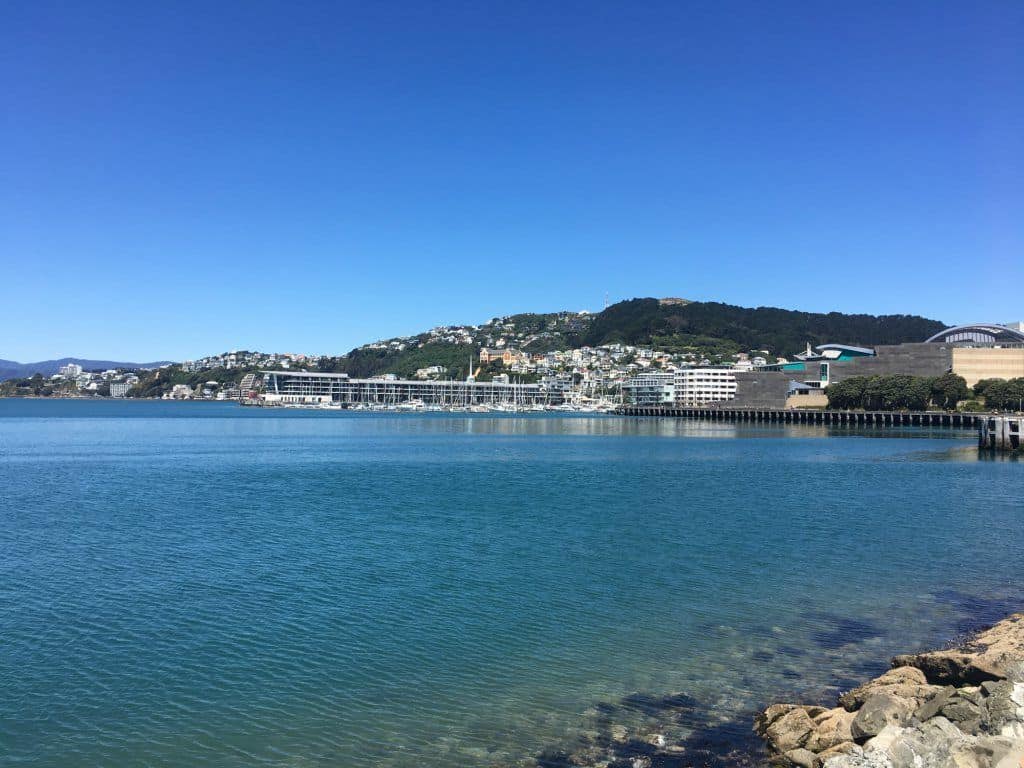
The Best Places to Visit on the South Island, New Zealand
There’s always a bit of debate about which island is the best in New Zealand.
You’ve read about the North Island, so now I want to share with you all the top places to visit on the South Island.
This stunning National Park is one of the top places to go on the South Island of New Zealand.
It’s home to the most accessible of New Zealand’s great walks, the Abel Tasman Coast Track .
Taking between 3 and 5 days depending on your fitness you will be rewarded with a pristine coastal view and the joyful isolation the long-distance hikes can bring.
You do not need to take on the entire Coast Track to experience this stunning National Park.
There are plenty of options where you can take on smaller sections. A welcome relief if your time here is limited.
These shorter day tours begin in Kaiteriteri , although it is possible to do a much longer day trip from Nelson .
Alternatively, you can kayak Abel Tasman if you would like to explore it from the water.
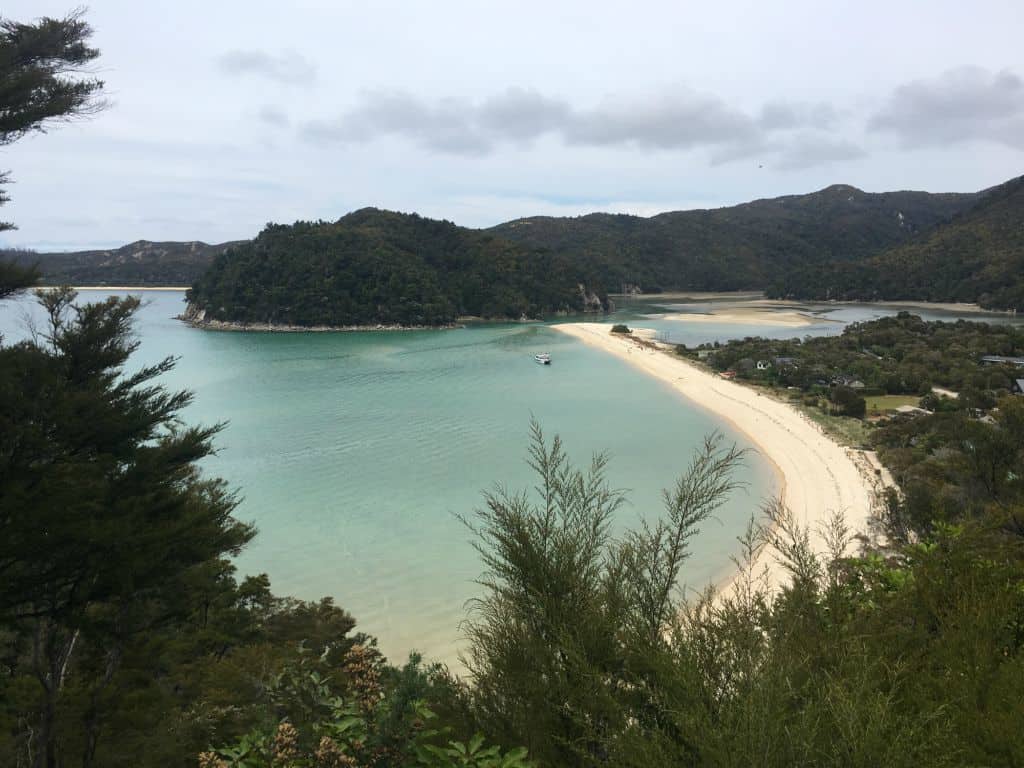
Be prepared to be spoilt for choice as you explore the largest wine region in New Zealand.
Accounting for 85% of New Zealand’s wine exports, Marlborough is home to around 35 wineries that are open to the public.
They provide cellar door experiences and tastings, with many wineries offering food options as well.
There are numerous ways to experience the wineries. You can drive yourself around, take a guided tour or take on one of the many cycling routes to burn those calories.
This quaint little city finds itself sandwiched between the Abel Tasman National Park and the Marlborough Wine Region on the South Island.
This combined with beautiful surroundings, a funky art and restaurant scene topped off with lashings of sunshine make it one of the most liveable cities in New Zealand.
Nelson is chock full of galleries and great restaurants, plus plenty of breweries.
Plenty of opportunities to gorge yourself before heading out into the wilderness of the Abel Tasman National Park.
For those interested in wildlife this is surely one of the best places to visit in New Zealand.
After a devastating earthquake in 2016 transport in and out of Kaikoura was a challenging and time-consuming affair whilst the coastal highway was rebuilt.
With snow-capped peaks as its backdrop, Kaikoura is blessed both on land and sea.
The town is famous for its incredible wildlife. With seals, albatross, dolphins, and whales all living in the waters surrounding the town.
There are numerous tours available to view these spectacular creatures up close with money made from such tours going back to support local wildlife conservation projects in many cases.
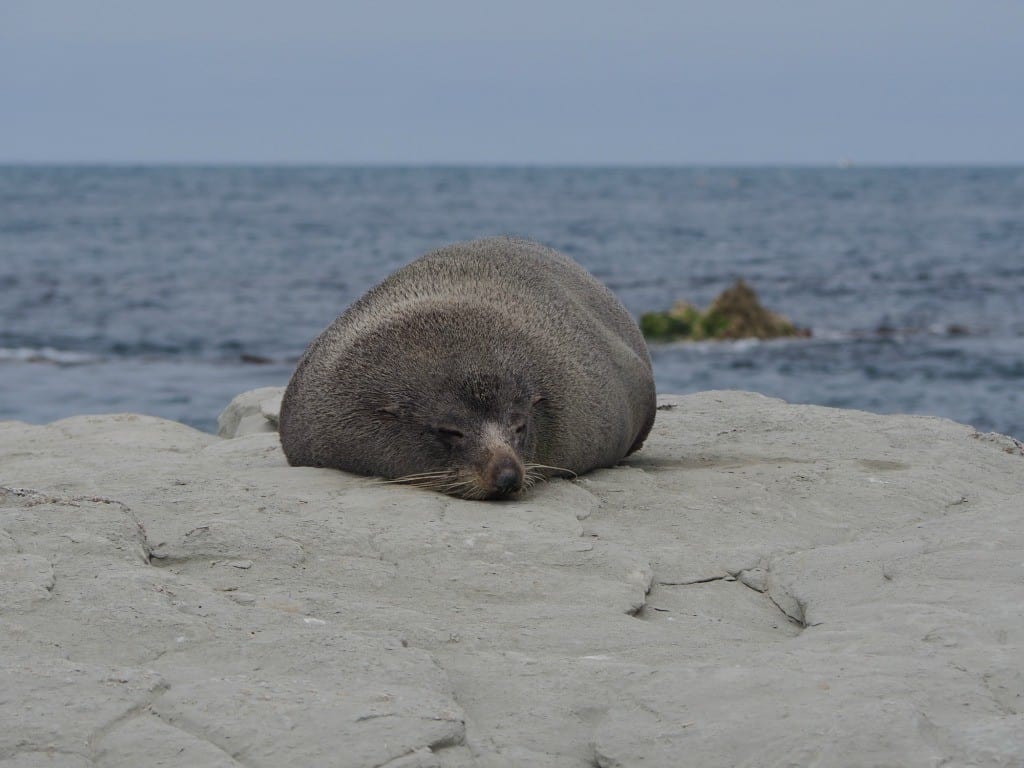
The west coast of the South Island is home to gorgeous beaches, deserted lakes, and a couple of glaciers thrown in for good measure.
Check out quaint little Hokitika and it’s a rather impressive gorge.
If you fancy something a bit more secluded head over to Lake Kaniere for a cheeky dip.
Heading further south will bring you to Franz Josef Glacier and Fox Glacier . Whilst they are fast receding, both Fox and Franz Josef Glacier are still spectacular.
If you’re looking for adventure activities you may head all the way down to the windswept beaches of Jackson Bay .
An awesome part of New Zealand to stop off where you please.
Read next: The Best Things To Do In Franz Josef
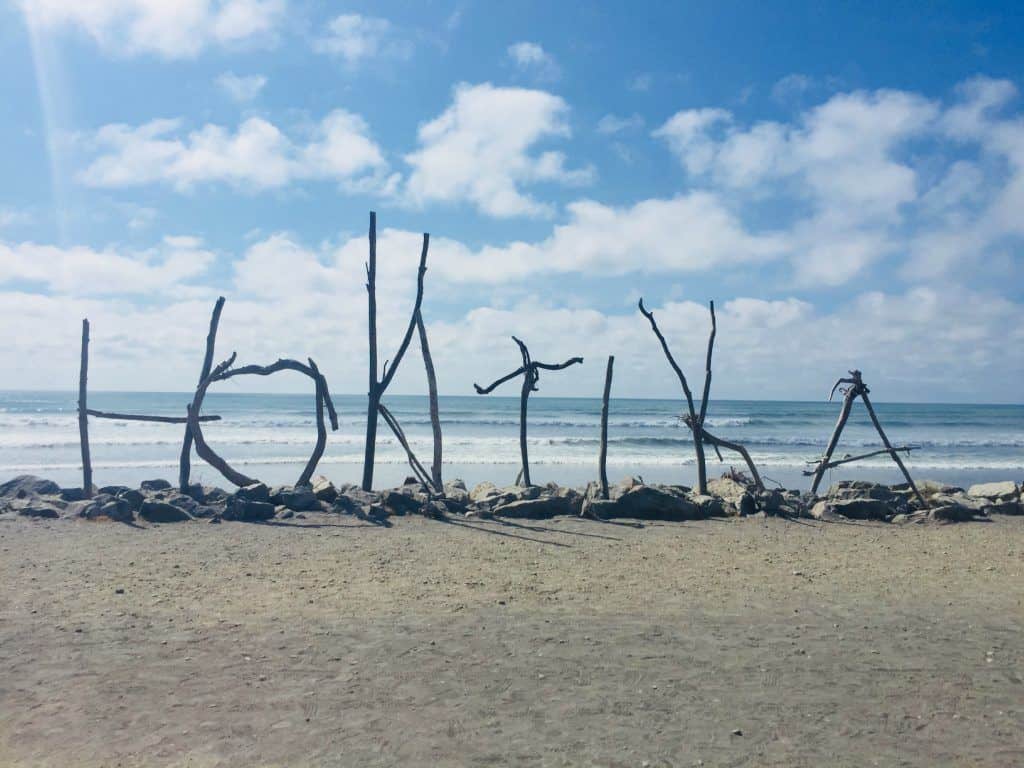
Of all the places to visit in New Zealand, Wanaka has to be near the top of your list.
Perched on the shores of Lake Wanaka, this tiny town can certainly stake a claim to being one of the most beautiful places in New Zealand’s South Island.
The area is home to numerous hikes including the infamous Roys Peak .
Whilst not being the most interesting trail, a 1300m ascent of solid switchbacks, 8km up and 8km back down, the views from the summit are nothing short of breathtaking.
If you fancy something a bit more extreme then Wanaka is one of the best places in New Zealand to try your hand at canyoning.
You work your way down a canyon by abseiling, rappelling, swimming, and some seriously high jumps.
READ MORE about the incredible things to do in Wanaka !
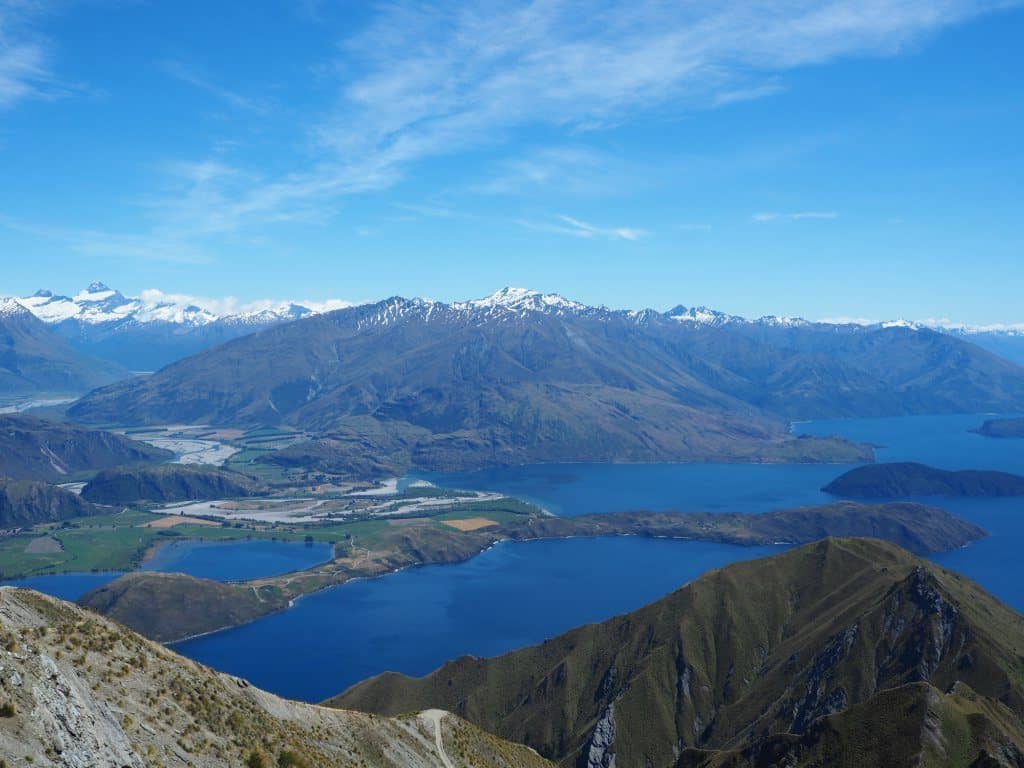
Welcome to the adrenaline capital of the world and the adventure capital of New Zealand. It all began in 1988 when AJ Hackett opened the world’s first Bungy, at the Kawarau Bridge.
From that point on Queenstown became the place to throw yourself off of or out of something just for the sheer thrill of it.
The original Bungy site is still in operation. However, if you’re brave enough you can head up the completely terrifying Nevis Bungy which is stomach-churning 134 meters high.
If you don’t fancy a bunny then try out the epic canyon swings, flying foxes, paragliding, mountain bike trails, and jet boating. Queenstown is known for adventure sports!
If you’re here in the winter months then you can head up to the snow capped mountains of the Remarkables for some skiing and snowboarding.
Of course, no mention of Queenstown would be complete with a mention of the institution that is Fergburger .
Starting out in 2001 it developed from a hole-in-the-wall burger joint to New Zealand’s most famous restaurant, where the cue is always long.
Be sure to add these epic things to do in Queenstown to your New Zealand itinerary!
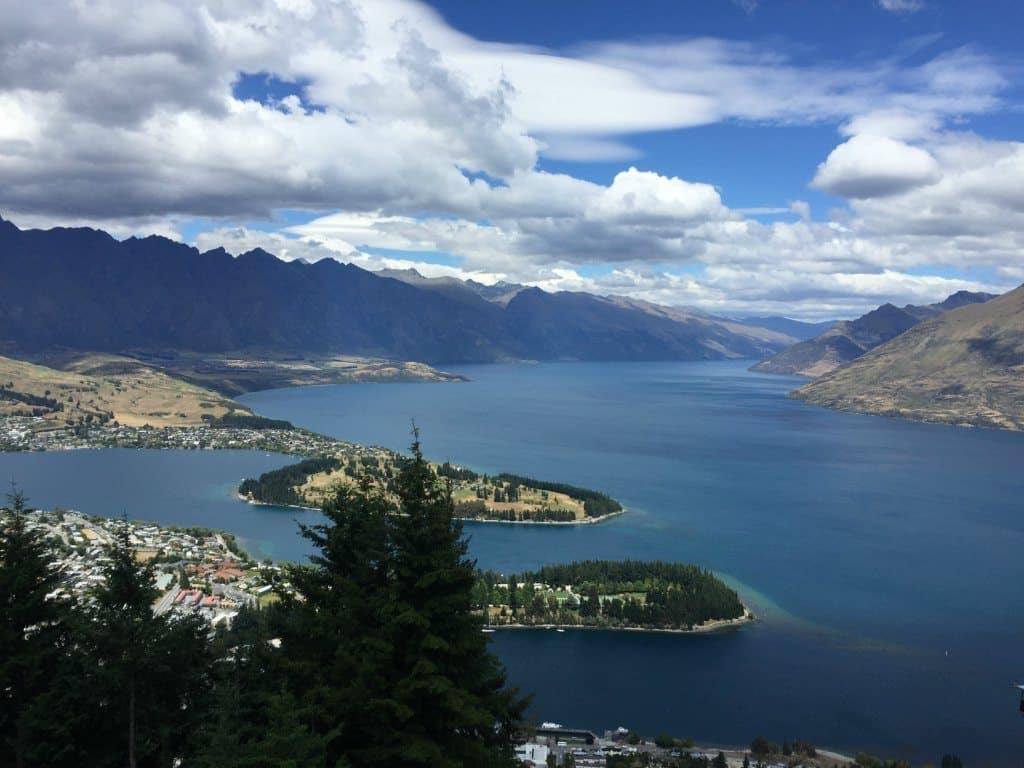
Nestled in the southwest corner of the island, Milford Sound and Doubtful Sound are in the heart of the Fiordland National Park and a popular spot on any New Zealand bucket list.
Being the more well-known (and affordable) of the two, Milford Sound receives far more visitors than Doubtful Sound.
Milford Sound can be done as a day trip from Queenstown, with this becoming the preferred option for many.
However an overnight option is a great option, plus there will be far fewer people.
As spectacular as Milford Sound is, and it is truly breathtaking (don’t believe me? Check out this awesome day tour cruise ), it cannot compare to Doubtful Sound.
At 10 times the size of Milford Sound, it is truly something that needs to be seen to be believed.
Its sheer remoteness and size means that very often it feels like the only boat in the sound is yours.
Getting out to Doubtful Sound requires a boat trip across Lake Manapouri, followed by an hour’s drive along the most expensive road in New Zealand before you arrive.
If you have the time and budget, an overnight stay is a highlight for those that do.
This is the wettest region in New Zealand’s South Island and when the heavens open, waterfalls cascade down the surrounding mountains and Milford Sound and Doubtful Sound come alive.
Check out our incredible experience kayaking Doubtful Sound .
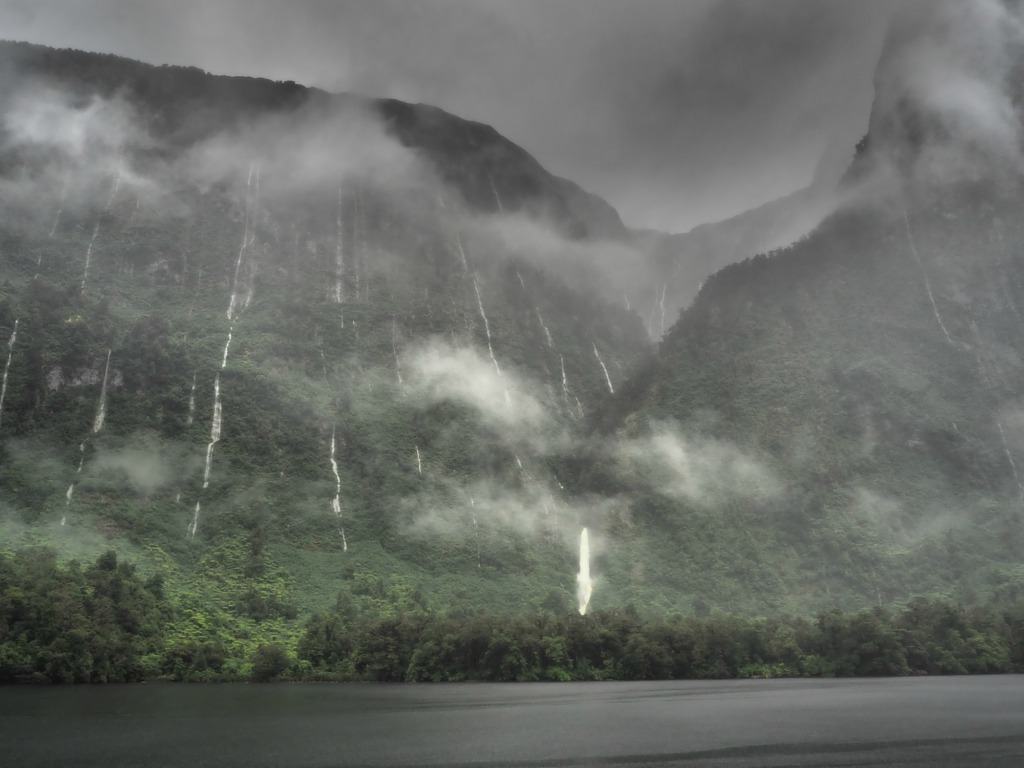
This gorgeous National Park in the southeastern corner of the South Island is a glorious combination of desolate windswept beaches and rugged coastal hiking trails.
More often than not it’s overlooked by travellers as the criss-cross between Otago and Fiordland.
A crying shame in truth, but a wonderful opportunity to escape the crowds.
Curio Bay is an amazing place to spot yellow-eyed penguins and the rare Hectors dolphin.
If you’re lucky seals, sea lions and even the occasional whale may be spotted.
Head down to the most southerly point of mainland New Zealand at Slope Point , explore hidden beaches and take on the numerous hiking trails.
READ MORE: Check out our ultimate guide for hiking in New Zealand !
A short drive from the centre of Dunedin is the Otago Peninsula which is full of wildlife and deserted beaches.
The big draw here is the Albatross Centre where you can observe these stunning creatures and understand more about the threats to their habitat and environment.
It’s also possible to visit the Albatross Centre in the evening to observe the little blue penguins, the world’s smallest species returning to their nests at night.
Usually between 100 and 200 will return on any given night. However, sometimes this number can be as high as 300!
For more adventures with the local wildlife head out on a sea kayaking tour to observe the area’s seal and sea lion communities.
These guided tours will take you around to sheltered bays that would be impossible to visit without a kayak, giving you the opportunity to observe these stunning creatures in their natural environment.
Read more about our epic hikes throughout the Otago area.
Mount Cook National Park is one of the most spectacular places to visit in New Zealand. If you are lucky enough to be here on a day with clear blue skies then prepare to be amazed.
The SH80 that runs parallel to Lake Pukaki gives you the first glimpse of the highlight of the Southern Alps.
There are a couple of spots that offer incredible views of Mount Cook .
If you are in a camper van, try to get here early to make sure you have a spot in the DOC camping site in Mount Cook National Park.
From this DOC camping site, the Hooker Valley walk starts. This is the starting point for the Hooker Valley Track , although you can also join the Sealy Tarns and Kea Point Tracks from here.
The Hooker Valley Track is probably the best of these three-day walks on the South Island.
The views of Mount Cook after the second swing bridge are breathtaking.
At the end of the trail, you will find yourself on the edges of Hooker Lake where icebergs from the Hooker Glacier are likely to be floating.
Mount Cook National Park has those dramatic alpine views that you expect to see in New Zealand!
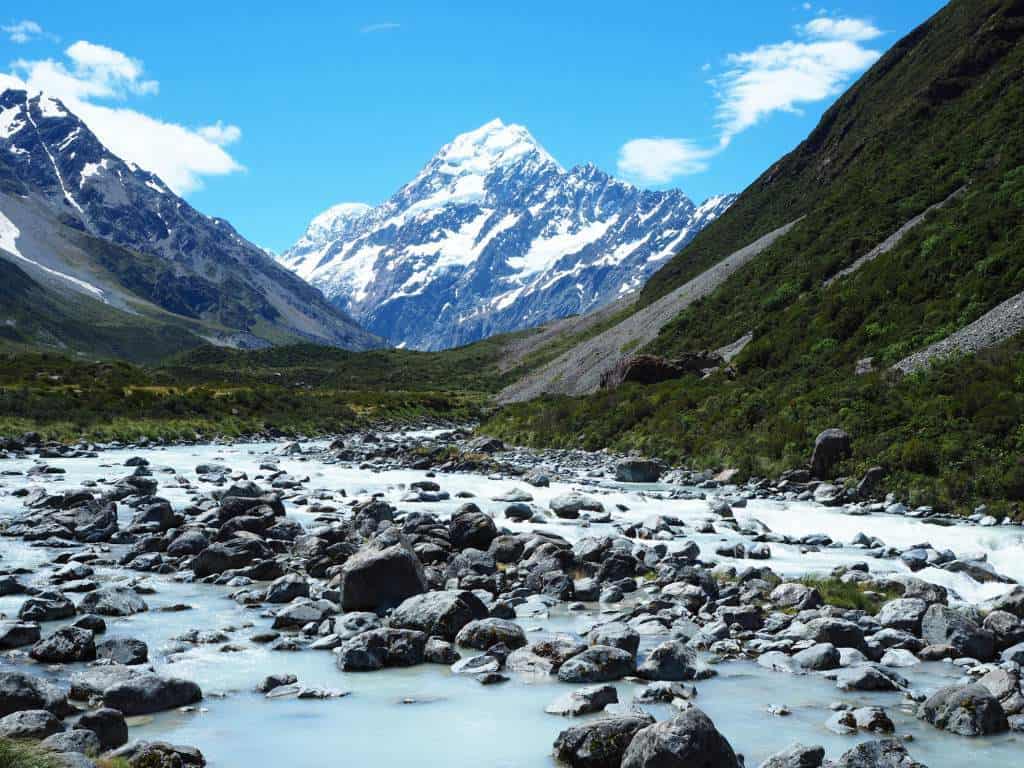
This small national park is in the heart of the Canterbury Region and is home to numerous hiking trails including the Devils Punchbowl, Temple Basin, Bealey Spur, and Avalanche Peak .
Head down to Jackson’s Retreat to check out their glow worm tours as well.
The West Coast Road, SH73 that runs through the Arthurs Pass National Park from east to west is home to a number of gorgeous lakes and mountain vistas en route.
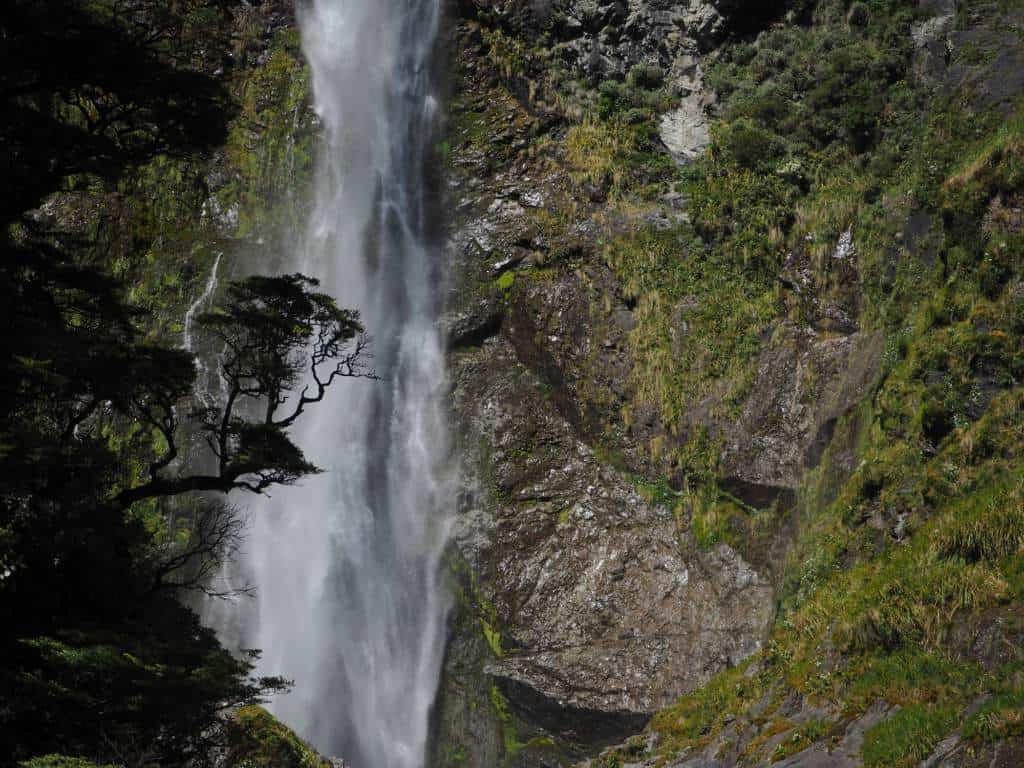
Sticking out from the South Island’s east coast is the Banks Peninsula. This little piece of paradise is one of New Zealand’s prettiest spots.
The main town of Akaroa is the perfect place to base yourself for exploring the peninsula.
It’s home to numerous hiking trails taking you into the surrounding hills.
It’s also an awesome place to take dolphin tours to spot the tiny Hectors Dolphin which is only found in New Zealand.
Take a day to explore some of the many hidden beaches tucked away in various corners of the peninsula, with Okains Bay being particularly lovely.
The drive from Akaroa is absolutely spectacular.
It is possible to do this as a day trip from Christchurch. However, I would very much recommend taking at least two nights to explore the stunning area of New Zealand.
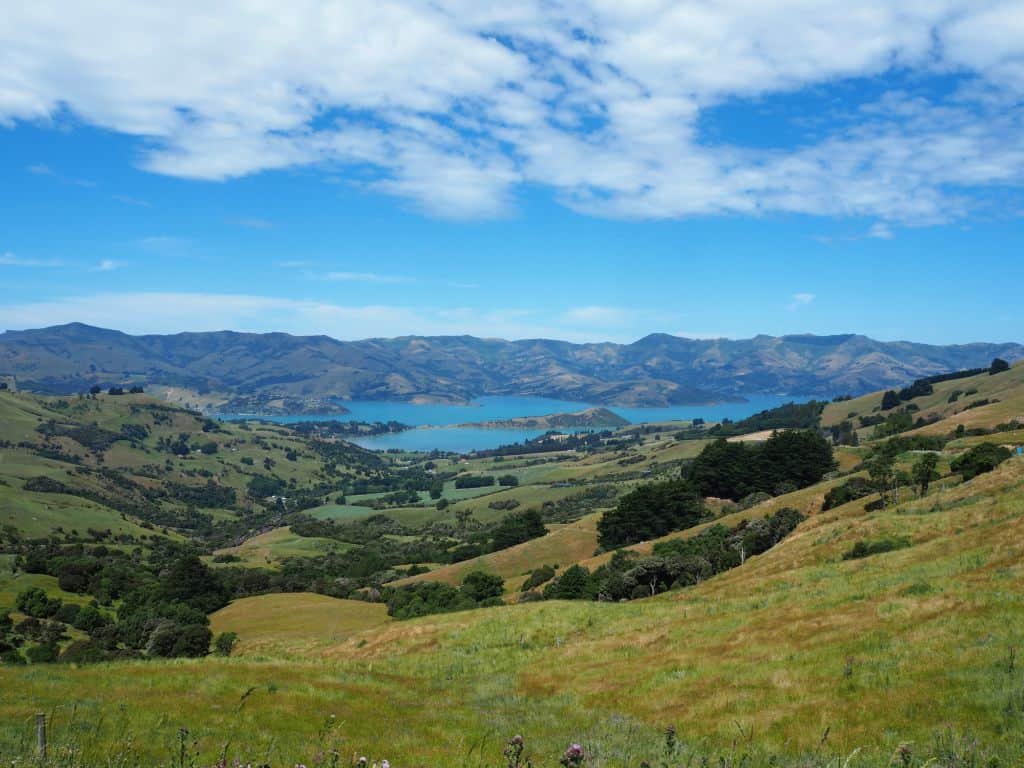
For many, this is their point of entry or exit. A charming place to spend a night or two, there is plenty to keep you busy.
The city’s botanical gardens are well worth checking out and are particularly beautiful in spring.
Over the course of 2010 and 2011, Christchurch was hit by a number of earthquakes, changing the city forever.
The impacts of these earthquakes can still be seen today where Christchurch Cathedral is still undergoing repairs.
Visit Quake City to learn more about the complex relationship Christchurch has with earthquakes.
If you’re in the mood for some scenery head up to the Gondola for amazing views of Christchurch, Lyttelton, and Banks Peninsula from the top of Mount Cavendish.
READ MORE: Be sure to add these amazing things to do in Christchurch !
DISCLAIMER: Some of the links in this article are affiliate links, which means if you book accommodation, tours or buy a product, we will receive a small commission at no extra cost to you. These commissions help us keep creating more free travel content to help people plan their holidays and adventures. We only recommend the best accommodations, tours and products that ourselves or our fantastic editorial team have personally experienced, and regularly review these. Thanks for your support, kind friend!
Richard Barnes
Hi, We’re Alesha and Jarryd!

We’ve been traveling the world together since 2008, searching for the planet’s best destinations and adventures.
Love Travel?
Sign up for our free weekly newsletter for the best travel tips, ideas and deals!
We respect your privacy. Unsubscribe at any time.
READ MORE...
Whanganui Journey in New Zealand – The Ultimate Guide [2024]
The Ultimate Guide to New Zealand’s South Island in Winter
5 Best Adventure Activities In Taranaki, New Zealand
Related Posts
Ultimate guide to hiking in otago, new zealand [2024], 13 amazing things to do in franz josef (2024 guide), 21 amazing things to do in auckland, new zealand [2024], 21 epic things to do in queenstown, nz [2024 guide], leave a comment cancel reply.
Save my name, email, and website in this browser for the next time I comment.
See reviews Enquire now
Email: [email protected]

- South Island New Zealand Weather in July
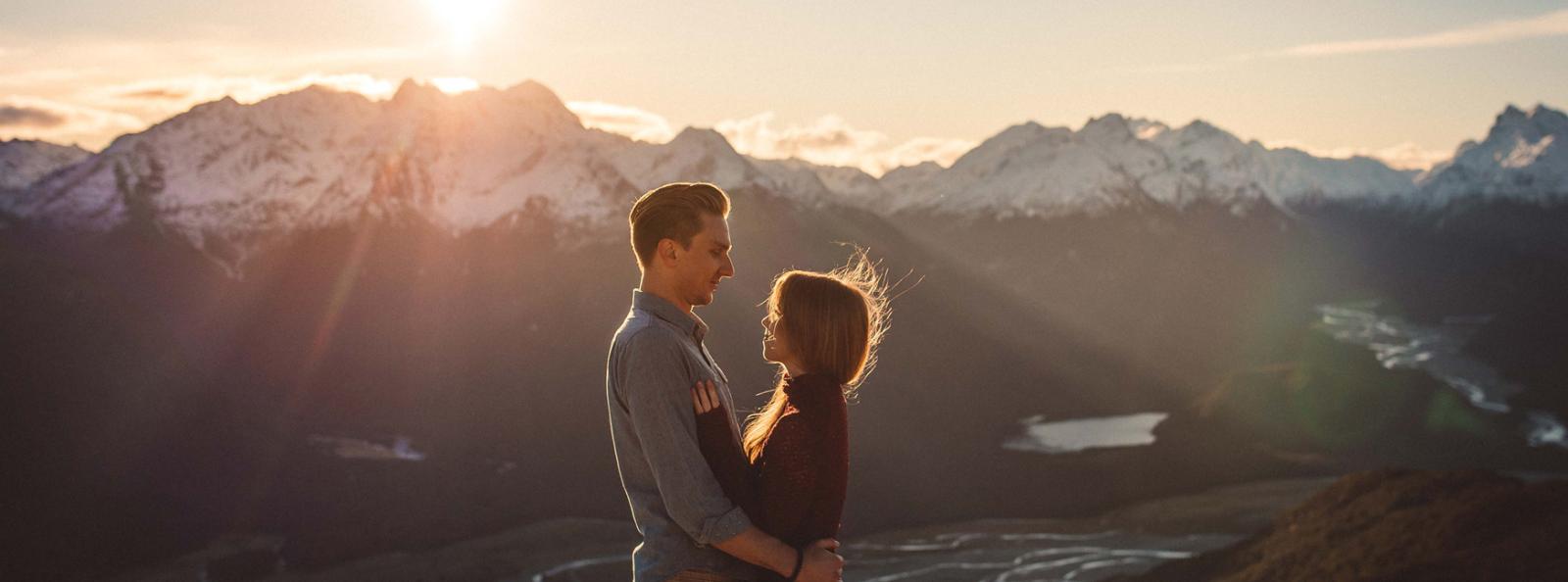
- New Zealand Travel Blog
July is peak winter in the South Island, which means a lot of crisp, clear skies and plenty of lovely snow (in parts). It also means that it’ll likely be cold – but not everywhere. Read on for everything you need to know about what weather to expect in the South Island during July.
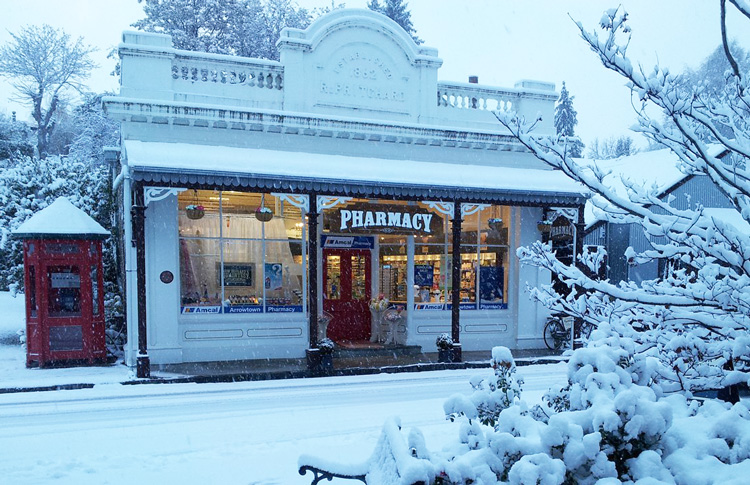
Average Sunshine Hours Per day in the South Island in July
Average rainfall in the south island in july.
- Best Things to do in the South Island in July
Average Temperatures in the South Island in July
As its the middle of winter, July is often cold in New Zealand, and below freezing in some areas of the South Island – ideal for its world-famous snow sports. Other areas, however, are more mild at this time. Queenstown, for example, the South Island’s winter sports and adventure hub, sees nightly lows well below freezing during July, with average lows of -1.7°C throughout July guaranteeing plenty of great snow. Nelson, meanwhile, New Zealand’s “sunshine capital” at the top of the South Island, still regularly sees temperatures in the mid-teens during July.
Depending on what you plan to do where you plan to go in the South Island during July, then, here’s what to expect from the temperature gauge:
Winter is in full swing in the South Island in July. What that means is that days are short, and sunlight can be sparse. However, despite heavy rain and snow in some parts, this tends to come in bursts, and there is still plenty of sunshine to be had around the South Island in July – it just depends a bit on where you plan to go. Queenstown sees just over 2.5 hours of sunshine a day between snow dumps, while in Christchurch and Nelson you can still expect around 5 hours of sunshine a day on average in July. Also, those short days are certainly not a bad thing when you consider that they also mean long nights – ideal for star-gazing under the South Island’s famous starry, winter skies.
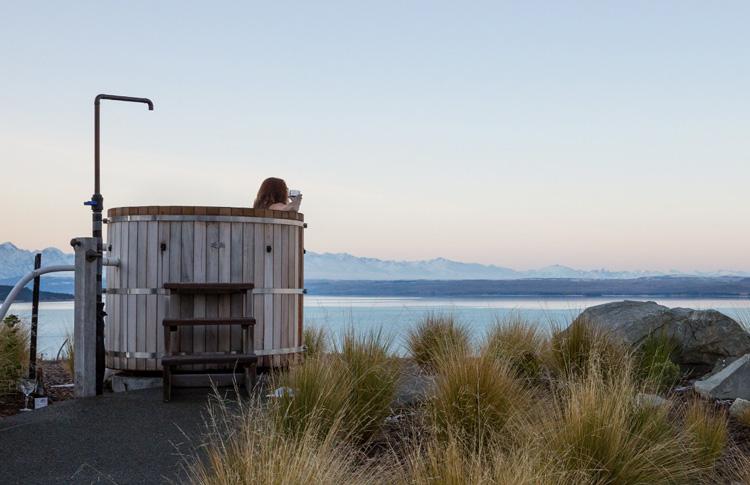
July is in the middle of the rainiest period for many parts of northern New Zealand, including Auckland, Northland and the Bay of Plenty. However, in the South Island, it’s a different story: in some places – such as sunny Nelson and world-famously rainy Milford Sound and Fiordland National Park – this is actually often the driest month of the year. Around other parts of the South Island, a lot of precipitation falls as snow in the mountains, so you don’t actually have too many wet days to worry about.
Best Things to do in the South Island in July
Hit the slopes .
The South Island ski season is in full swing by July. Head to world-famous resort towns Wānaka and Queenstown to be in the heart of the action, or head into one of Canterbury’s charming club fields for a more local and rustic experience. Wherever you go, there’s bound to be a warm fire, mulled wine and delicious roast lamb waiting for you at the end of the day.
Whale Watching in Kaikōura
While winter in some parts of the South Island may feel cold to us humans, the seas around the South Island’s East Coast are actually a relative haven by the standards of humpback whales, who leave the freezing Antarctic waters during winter and pass through the ocean-trench off Kaikōura on their seasonal migration northwards. Combined with snowy mountain views of the Kaikōura Ranges in the background, it makes July a pretty special time for whale watching.
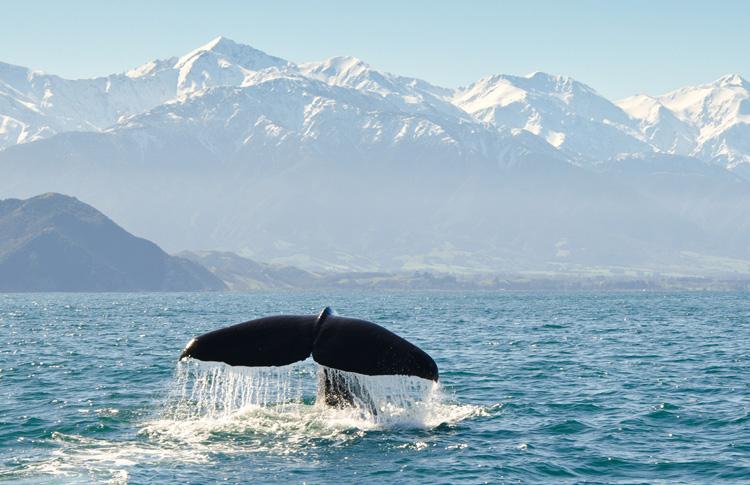
See Picturesque Milford Sound Under Snow
It always rains in Milford Sound – but it rains less in July than any other month. Combined with the possibility of fresh snow capping the top of Fiordland’s Mitre Peak, July could offer the best possible photo opportunities of any month.
Spot the Southern Lights
With some of the deepest, darkest nights of the year, July is prime time to see the majestic Southern Lights in the South Island. The further south you go, the better your chances are, so areas around Invercargill, Southland and the Catlins are great destinations during July. Of course, the UNESCO-protected Dark Sky Reserve over Lake Takapō and the Mackenzie Country, combined with the nearby ski fields, also makes the Central South Island a great option this time of year, too.
Ready to go?
If you want to start planning a winter trip to the south island, head to first light travel to find out everything you need to know before you go. they have a dedicated new zealand travel blog to answer questions on all sorts of topics. you can even book a number of south island self-drive itineraries straight away. or, simply get in touch with flt’s south island travel experts , .

RELATED TOURS
Download Our Free NZ Travel Guide
Get our free guide which is full of actionable tips and information about how to make the most of your time in New Zealand.
Recent Posts
Blog categories.
- April 2024 (1)
- March 2024 (2)
- January 2024 (2)
- November 2023 (9)
- October 2023 (2)
- August 2023 (1)
- June 2023 (1)
- May 2023 (2)
- April 2023 (1)
- March 2023 (17)
- February 2023 (4)
- January 2023 (2)
- December 2022 (11)
- November 2022 (7)
- October 2022 (1)
- May 2022 (1)
- March 2022 (3)
- February 2022 (3)
- January 2022 (1)
- December 2021 (1)
- August 2021 (1)
- June 2021 (1)
- May 2021 (2)
- February 2021 (1)
- August 2020 (1)
- July 2020 (1)
- May 2020 (1)
- April 2020 (1)
- March 2020 (1)
- January 2020 (1)
- December 2019 (1)
- November 2019 (1)
- October 2019 (1)
- September 2019 (1)
- August 2019 (5)
- July 2019 (2)
- June 2019 (1)
- May 2019 (3)
- April 2019 (1)
- March 2019 (1)
- February 2019 (1)
- January 2019 (1)
- December 2018 (1)
- November 2018 (1)
- September 2018 (1)
- August 2018 (1)
- July 2018 (1)
- June 2018 (1)
- May 2018 (1)
- April 2018 (1)
- March 2018 (1)
- February 2018 (1)
- January 2018 (1)
- December 2017 (1)
- October 2017 (1)
- September 2017 (1)
- August 2017 (1)
- July 2017 (1)
- June 2017 (1)
- May 2017 (1)
- April 2017 (1)
- March 2017 (1)
- February 2017 (1)
- January 2017 (1)
- December 2016 (1)
- November 2016 (1)
- October 2016 (1)
- September 2016 (1)
- August 2016 (1)
- July 2016 (1)
- June 2016 (1)
- May 2016 (1)
- April 2016 (1)
- March 2016 (1)
- February 2016 (1)
- January 2016 (1)
- December 2015 (1)
- November 2015 (1)
- October 2015 (1)
- September 2015 (1)
- August 2015 (1)
- July 2015 (1)
- June 2015 (1)
- May 2015 (1)
- April 2015 (1)
- March 2015 (1)
- February 2015 (1)
- January 2015 (1)
- December 2014 (1)
- November 2014 (1)
- October 2014 (1)
- September 2014 (1)
- July 2014 (1)
- June 2014 (3)
- May 2014 (1)
- April 2014 (1)
- March 2014 (1)
- February 2014 (1)
- January 2014 (1)
- November 2013 (15)
- October 2013 (1)
- September 2013 (1)
- August 2013 (1)
- July 2013 (1)
- May 2013 (1)
- April 2013 (1)
- March 2013 (1)
- February 2013 (1)
- January 2013 (1)
- December 2012 (1)
- November 2012 (2)
- October 2012 (2)
- September 2012 (2)
- August 2012 (2)
- July 2012 (2)
- June 2012 (2)
- May 2012 (2)
- April 2012 (3)
- March 2012 (2)
- February 2012 (2)
- January 2012 (2)
- December 2011 (2)
- November 2011 (1)
- October 2011 (2)
- September 2011 (1)
- August 2011 (1)
- July 2011 (1)
- June 2011 (1)
- May 2011 (1)
- April 2011 (1)
- March 2011 (1)
- February 2011 (1)
- January 2011 (1)
- December 2010 (1)
- November 2010 (1)
- October 2010 (1)
- September 2010 (1)
- August 2010 (1)
- July 2010 (1)
- June 2010 (1)
- May 2010 (1)
- March 2010 (1)
- February 2010 (1)
- January 2010 (1)
- December 2009 (1)
- November 2009 (1)
- October 2009 (1)
- September 2009 (1)
- August 2009 (1)
- July 2009 (1)
- June 2009 (1)
- May 2009 (1)
- April 2009 (1)
- March 2009 (1)
- February 2009 (1)
- January 2009 (1)
- December 2008 (1)
Related Tours
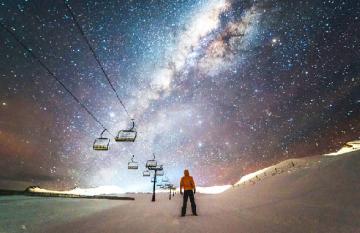
Queenstown - A Winter Playground Tour
Picturesque views, endless snow-capped mountains and world-class resorts – a skier’s paradise! Let your hair down in New Zealand's adventure capital. Cruise Milford Sound, take a gondola ride for panoramic views of Lake Wakatipu and get your adrenaline pumping on a jet boat ride, all with spectacular scenic backdrops.
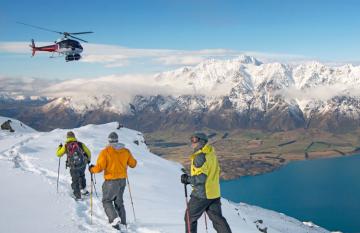
South Island Winter Adventure Circuit
In June as the summer in South East Asia starts to heat up, it's time to adventure down to New Zealand’s South Island and enjoy our exhilarating pristine powder paradise. If you really want diversity when carving up the white stuff, it is here you will undoubtedly experience heaven.
Off-Piste Back Country, Snow-Shoeing, Boarding with APRES-SKI
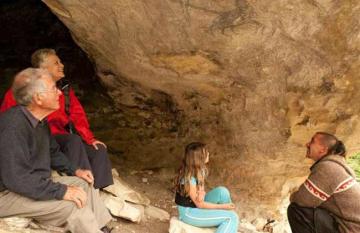
South Island Culture and Heritage Tour
From ancient Maori cave paintings to 19th century Gold Rush towns, the South Island boasts a wealth of New Zealand history and culture. Step back in time with us to pan for gold in Arrowtown, explore New Zealand's only castle, and meander along Queenstown's Lake Wakatipu in a vintage steamship.
Pricing terms
The price is based on current exchange rates but is only an approximation. Please contact us for a final price

IMAGES
VIDEO
COMMENTS
New Zealand Weather in July. July is mid-winter in New Zealand which means you need to wrap up warm, especially if you are spending time in the South Island or mountainous regions of the North Island. Otherwise, areas of the North Island, especially Auckland, are frequently rainy during July. On the other hand, July tends to be Central Otago ...
Cape Kidnappers to see amazing coastal landscape and the world's largest mainland gannet colony (more info on Viator and Tripadvisor) Waimarama Beach ( see more Hawke's Bay beaches here) Lake Waikaremoana to do one of the New Zealand Great Walks. Hawke's Bay Wine Trail - visit all the wineries around Napier and Hastings.
Reasons to visit New Zealand in July. It's the best month of the year to enjoy the country's ski season, with ideal conditions on both the North and South Island. Tourism in the more urban areas of the country is quite low in July, so if you're after a cheaper city break then now is the time to book one! The Māori New Year festival often ...
July temperatures here are warmer than the rest of the country (although not significantly higher than Auckland or other parts of the upper North Island ). It's not uncommon for daytime highs to reach 59° F (15° C), even in mid-winter. But, the upper North Island also gets a lot of rain between June and August.
July is the middle of winter in New Zealand and therefore on average the coldest month of the year. The temperature varies considerably across the length of the country, getting colder the further south you go. In July, the average temperatures range between 45 F and 55 F, with the South Island occasionally seeing temperatures in the 30s.
In NZ in July the South Island is tourist poster selfie scenery with lots of snowy landscapes. July is very busy with visitors to NZ from snow lovers, Europeans escaping the heat and locals on either school holidays. July is the wettest month in NZ with Auckland well known for being very damp. Restaurants, cafes and tour operators catering to ...
New Zealand experiences slightly different climates across the country, so take a look at the list below to see the average temperatures in July in the destinations you will be visiting. Northern New Zealand (Northland, Auckland and Tauranga) - 11ºC (52ºF) Central North Island (Hamilton, Taupo and Rotorua) - 7ºC (47ºF) South-West North ...
Suffice to say, the New Zealand July climate is cold throughout. The South Island averages around 7℃ in the day, with the North Island seeing a balmier 13 °C. Both islands see a lot of moisture throughout the season. In the South Island this equals high levels of snowfall. In the warmer North Island, this tends to mean plenty of rain.
However, those are not the only places with snow in New Zealand.. A region that is a favorite of mine is Central Otago. A scenic winter drive on State Highway 85 toward Hawkdun Range on a nice and sunny day alone is almost guaranteed to be a feast for the eyes and soul in winter.. Another place you could visit in July is the West Coast of New Zealand, although it might be difficult to get to ...
July is a good time to visit New Zealand. New Zealand has plenty to offer for visitors of all ages and interests. In this article, we tell you the top things to see and do for your July trip to New Zealand. Get inspired by the events, activities, attractions, and experiences unique to July.
Lake Te Anau and Lake Manapouri are beautiful places to cruise or kayak. Time commitment: Some travelers visit the Fiordland National Park on a quick day trip from Queenstown or Wanaka, while others stay for longer to explore. The famous Milford Track trek between Te Anau and Milford Sound takes four days. 15 of 15.
Day or night, from up close to views across the water, this mountain takes on of our top spots for South Island experiences. 2. Visit New Zealand's only castle. Lanarch Castle, Dunedin. By Enterprise Dunedin. Built by William Larnach in 1871, the Larnach castle is the only one of its kind in New Zealand. The castle and its creator offer a ...
Autumn in New Zealand: Mar, April & May. Autumn in New Zealand is a real treat. It's all about dazzling colours and pleasant weather. Towns and cities are also far less crowded as locals return to work and visitor numbers drop back, allowing more flexibility in travel plans.
What to Pack for New Zealand in July. While the Kiwi winter swings into full force in July, it is essential to pack warm, waterproof, and protective clothing as an important part of your luggage. There will hardly be any need for summery tees or shirts, besides as loungewear. Woollen beanies, socks, and sweaters will be especially appreciated ...
Highs in Christchurch and Wellington reach around 12 degrees Celsius. Temperatures in Queenstown will reach 10 degrees Celsius. Nelson on the South Island will reach 12 degrees Celsius, but as one of New Zealand's sunniest cities, it feels warm and is a great area to ski. July is Auckland 's wettest month.
And there is much variation in terms of average temperature depending on where in the North Island you are. For instance, July is cold in the subalpine and ski region of Taupo, with average low temperatures getting down to 2°C (35.8°F) at night, but daytime highs in Northland, Auckland and Hawke's Bay in July regularly reach 15°C (59°F ...
Unless you are going for the snow sports season in Queenstown or Wanaka, this is not the best time to travel to New Zealand. July is the coldest month of the year and the wettest in many popular cities like Auckland. So it is not a great time to enjoy the natural wonders and attractions that New Zealand is known for. But if you are looking for ...
Temperatures on an average day in Auckland in July. The average temperature in Auckland in July for a typical day ranges from a high of 58°F (14°C) to a low of 51°F (11°C). Some would describe it as moderately chilly and breezy. For comparison, the hottest month in Auckland, February, has days with highs of 74°F (24°C) and lows of 65°F (18°C).). The coldest month, July has days with ...
Mount Taranaki and the Forgotten World Highway. Mount Taranaki is very much the highlight in this part of New Zealand. Rising majestically from the earth's surface, Mount Taranaki's almost perfect cone dominates the landscape. Due to its accessibility, Mount Taranaki ranks as the most climbed mountain in New Zealand.
Plus, exploring New Zealand's majestic Remarkables mountain range is an absolute must-do experience. 3. go to the Queenstown Markets. One of the best things to do in July in Queenstown is visit the local markets - it's a lively spot buzzing with creativity. It's the go-to place for snagging something unique and handmade.
Queenstown, for example, the South Island's winter sports and adventure hub, sees nightly lows well below freezing during July, with average lows of -1.7°C throughout July guaranteeing plenty of great snow. Nelson, meanwhile, New Zealand's "sunshine capital" at the top of the South Island, still regularly sees temperatures in the mid ...